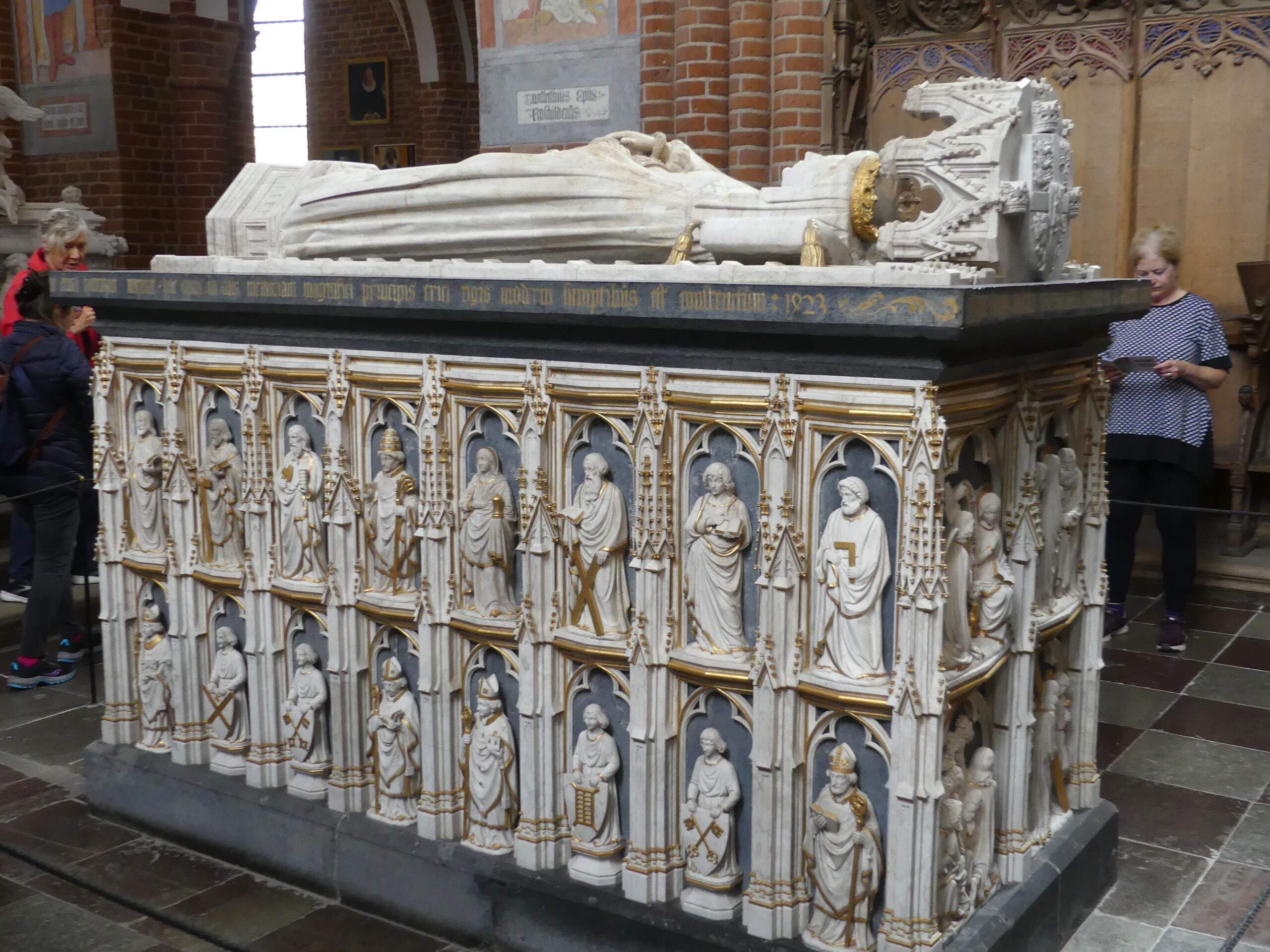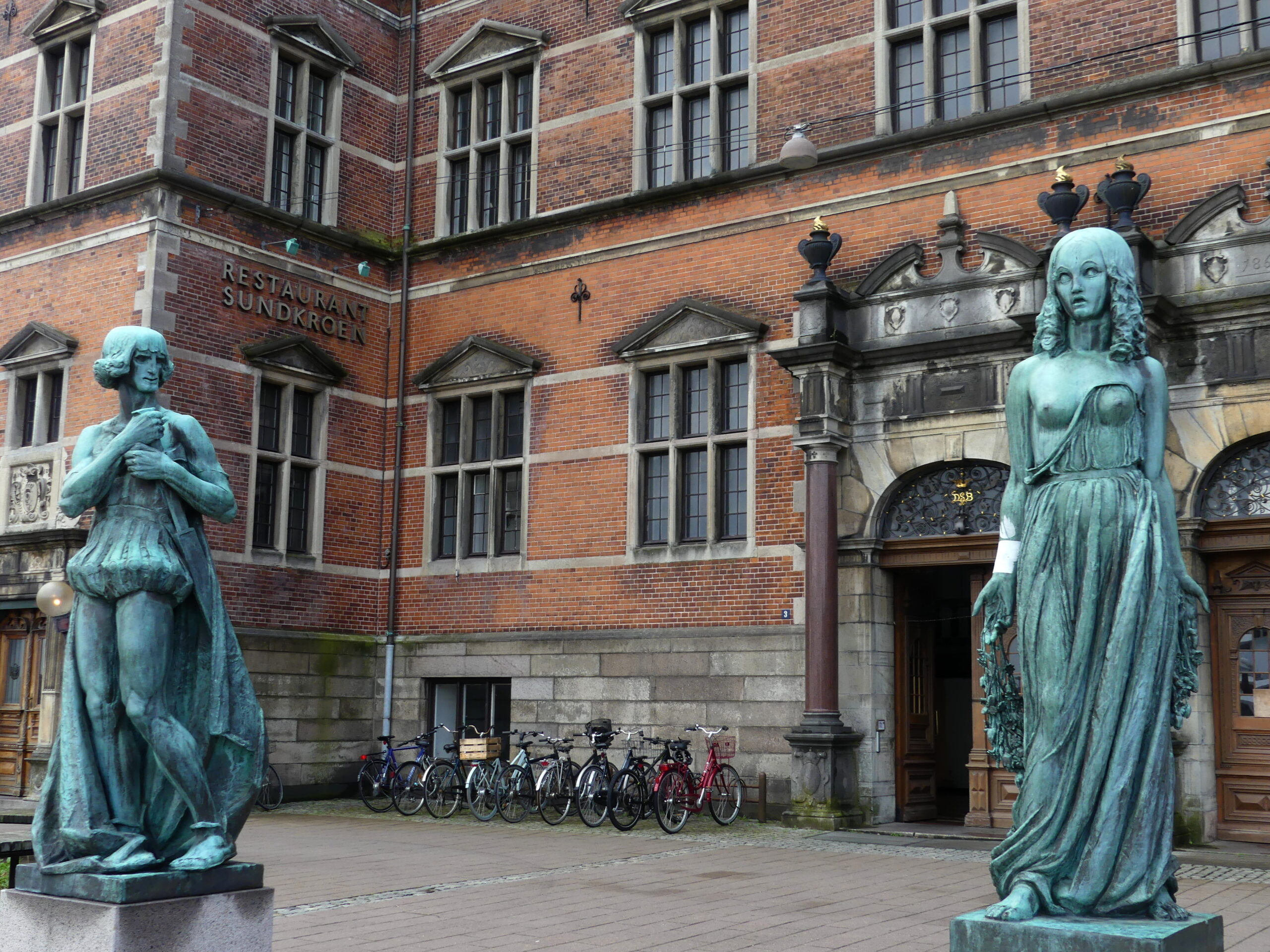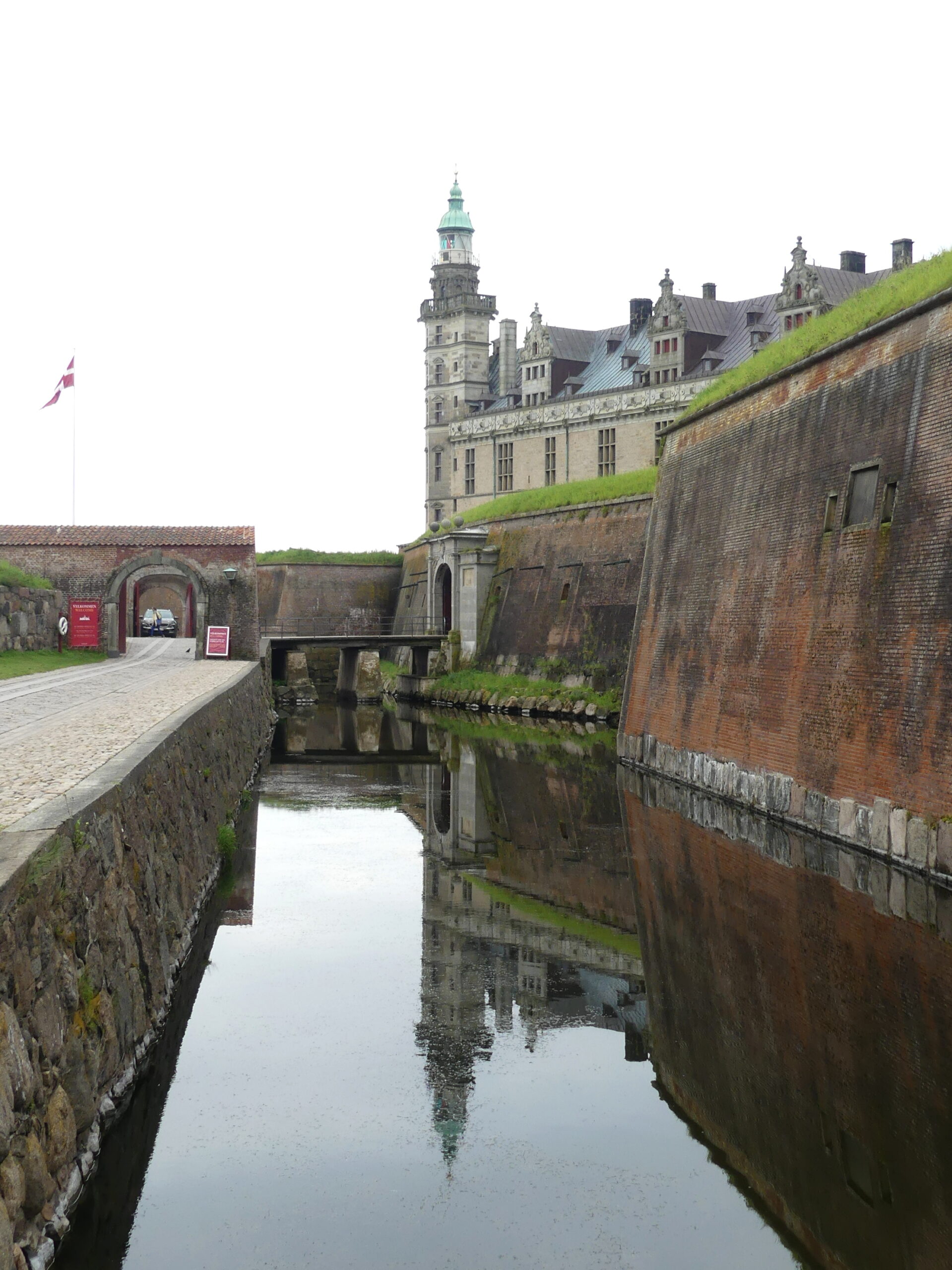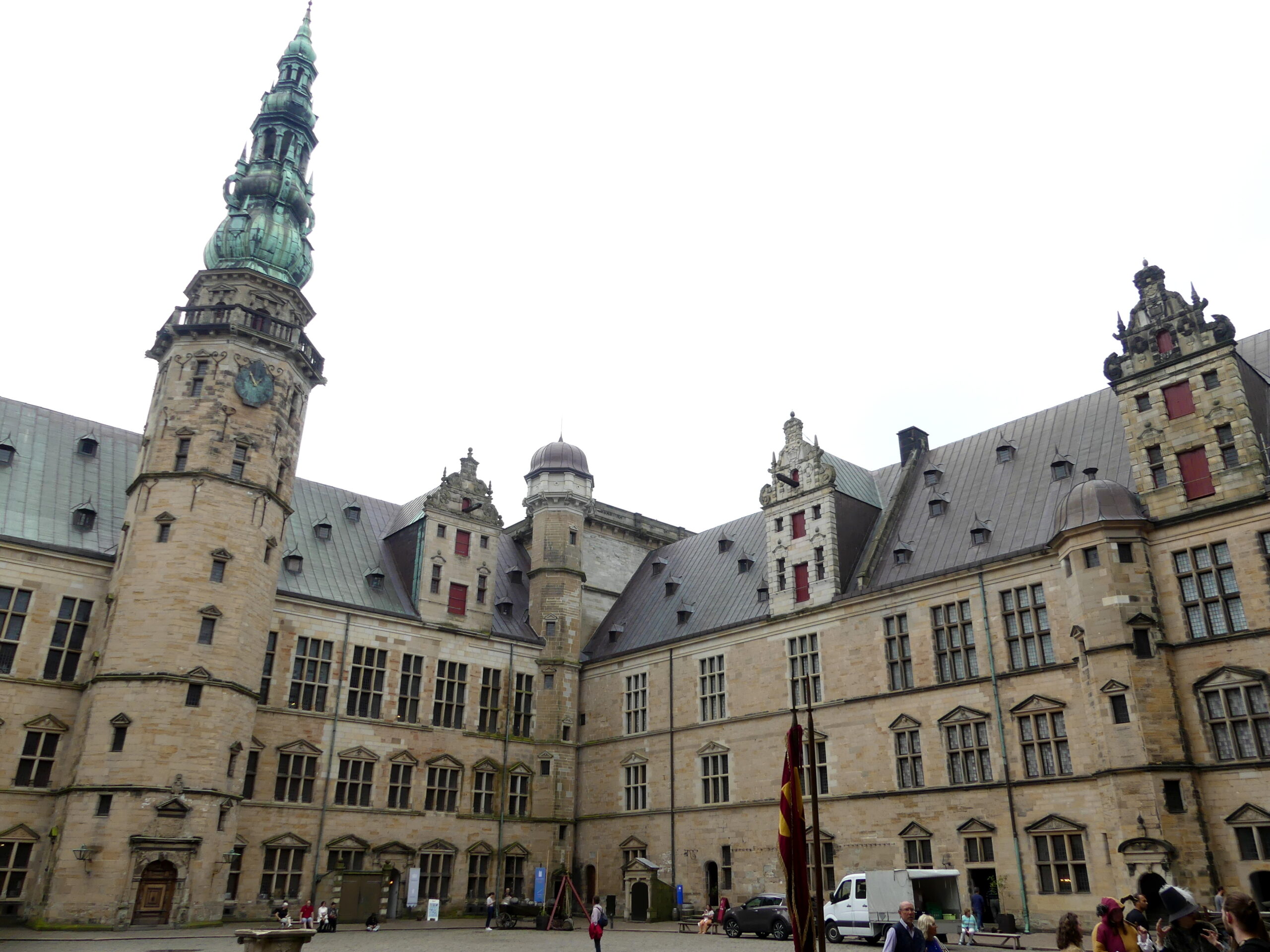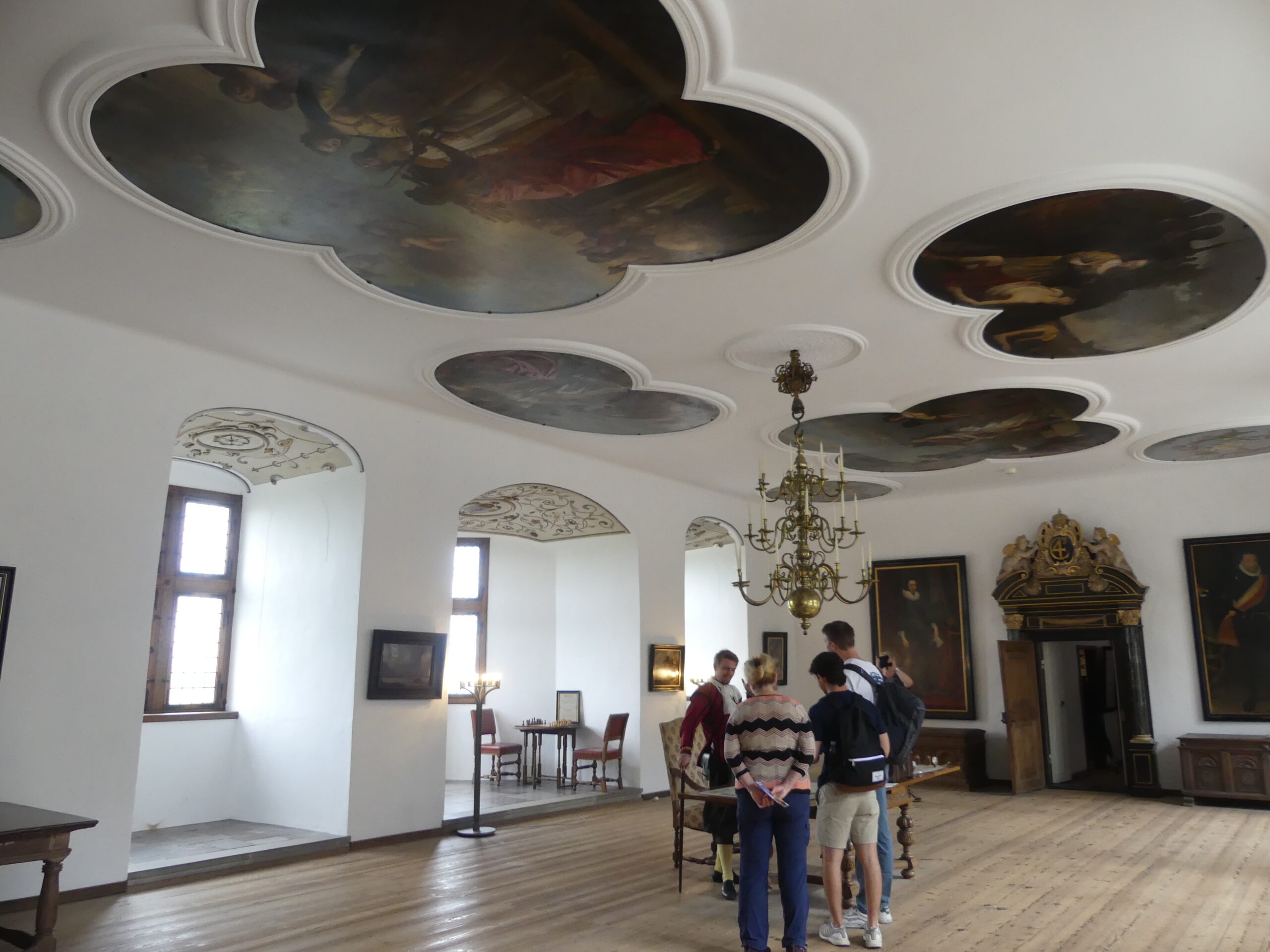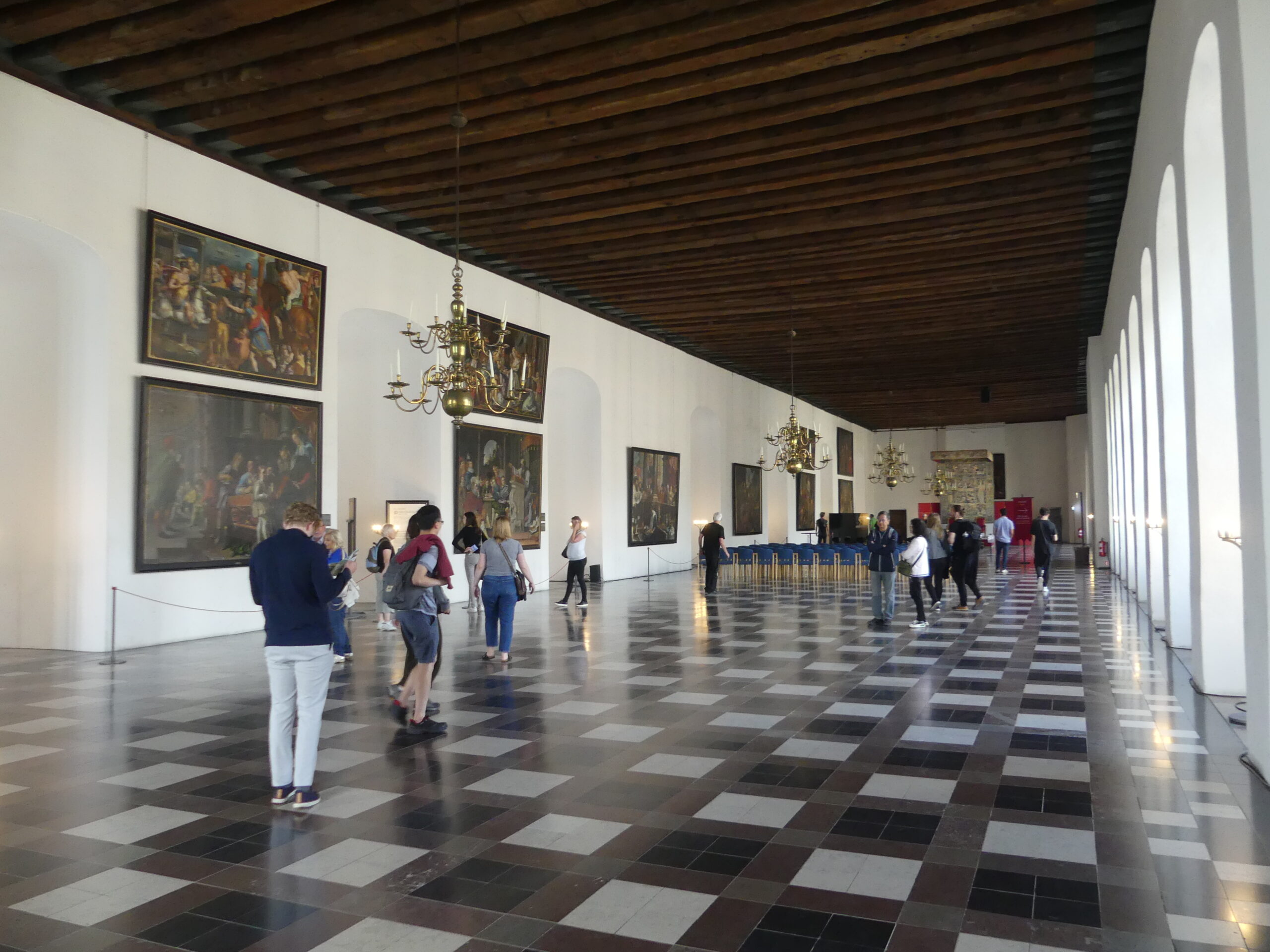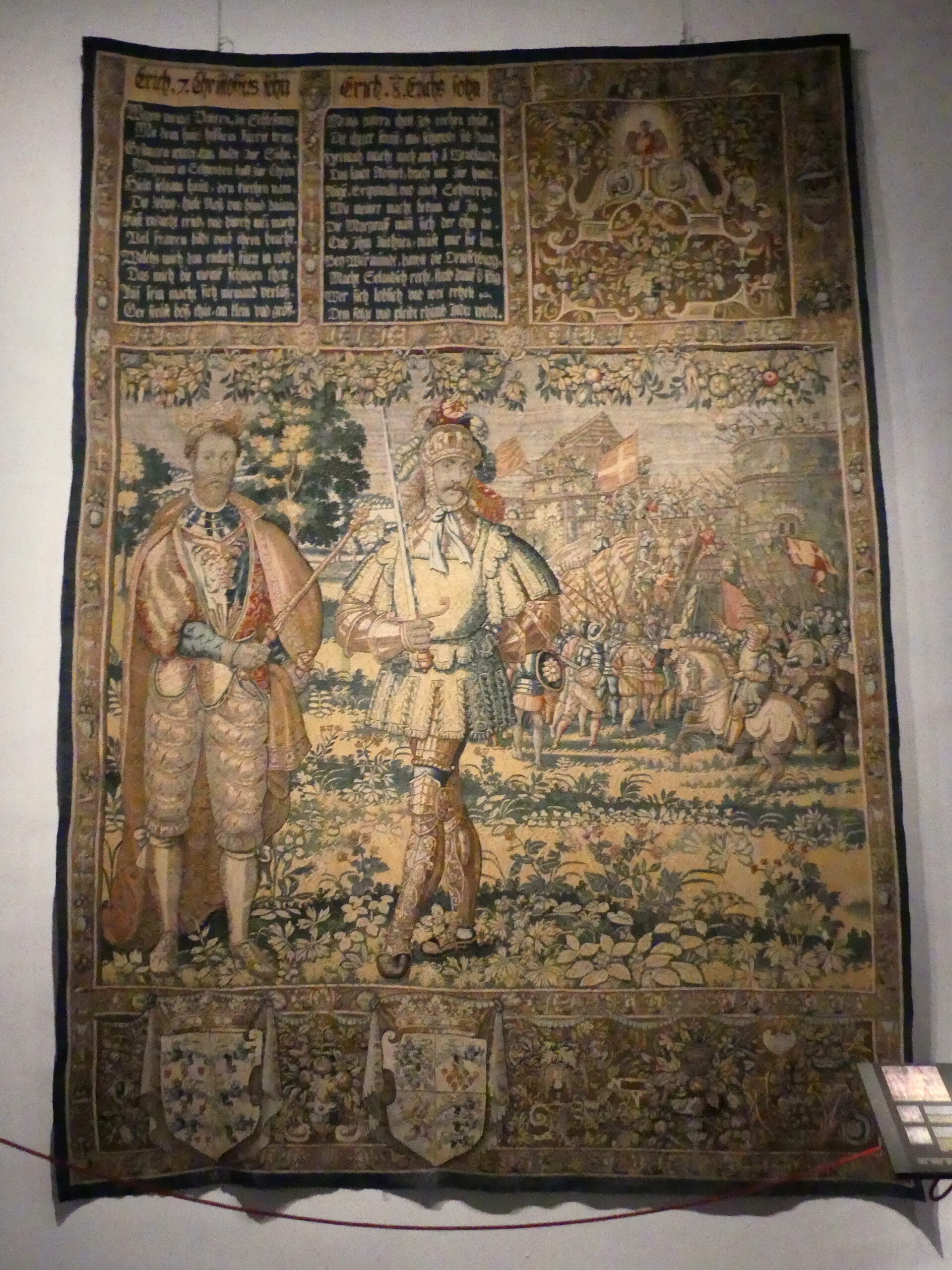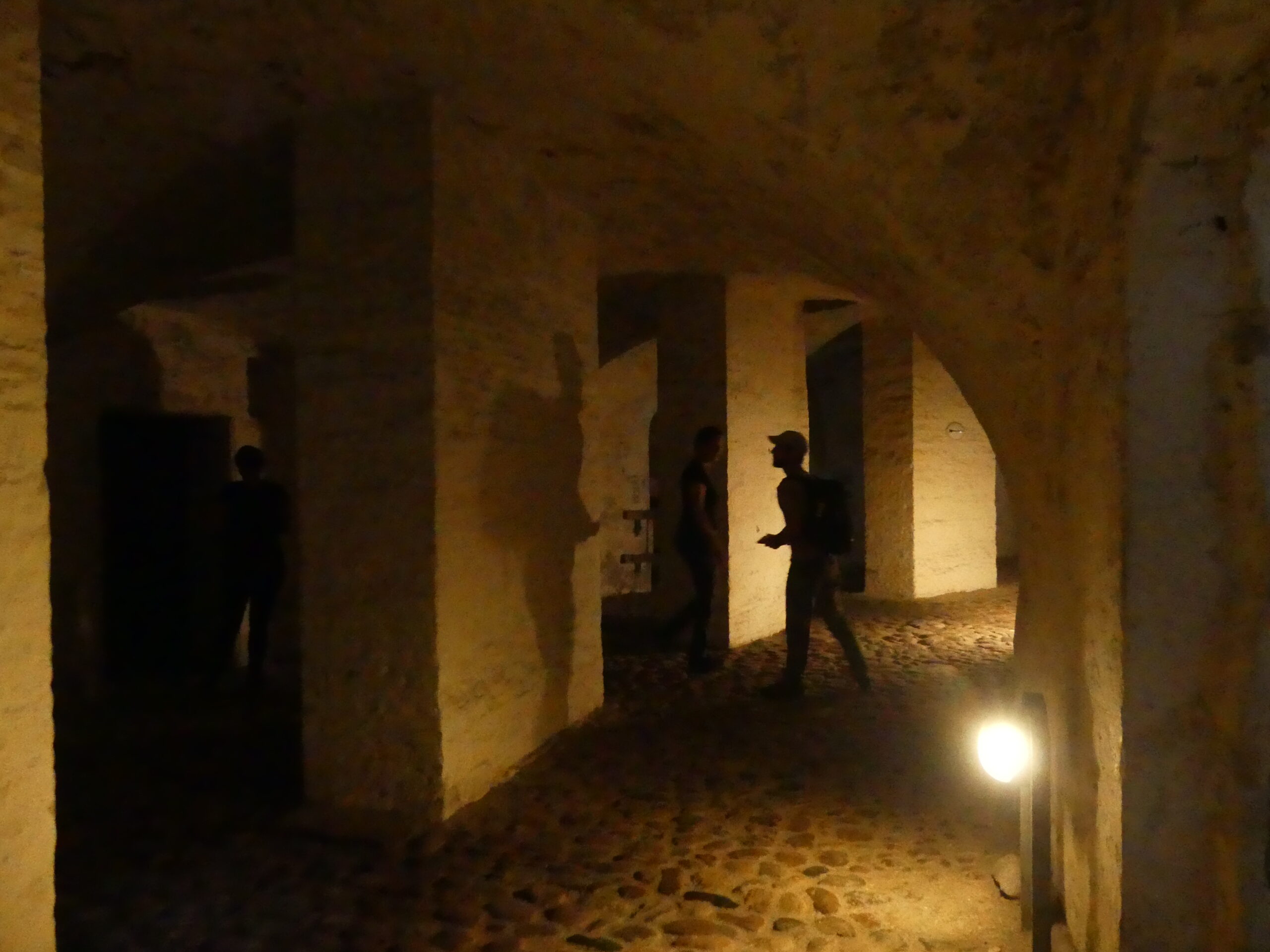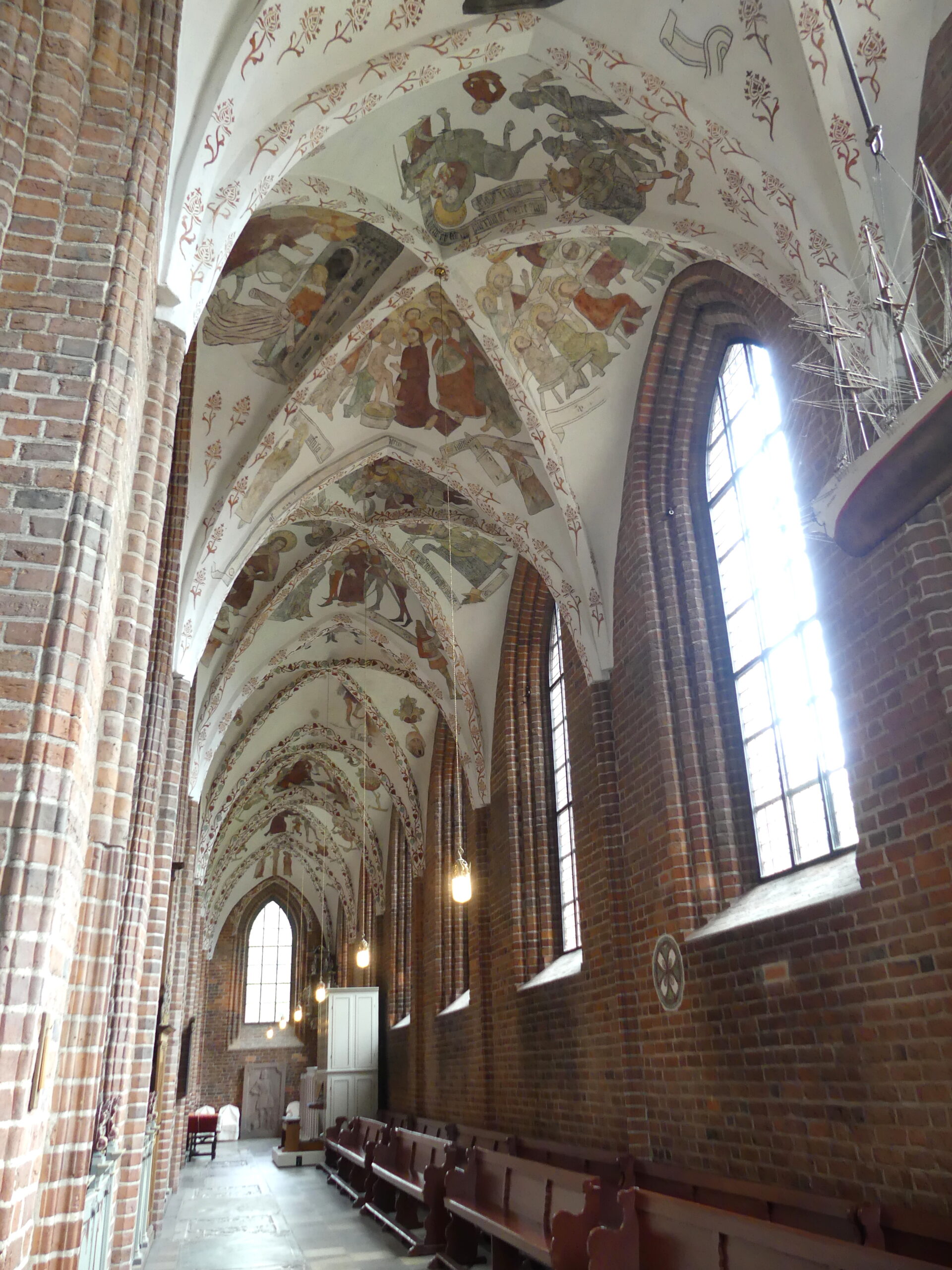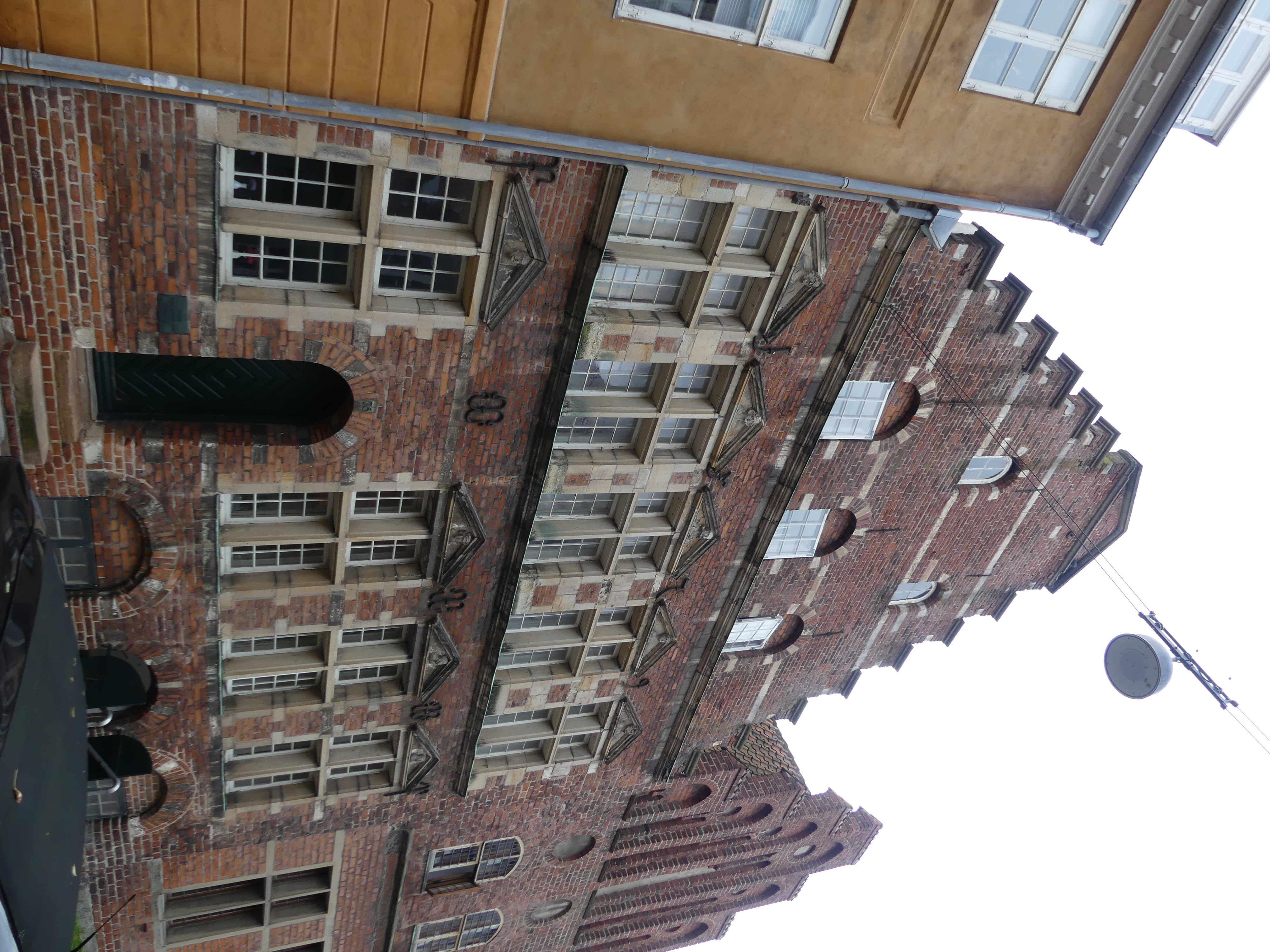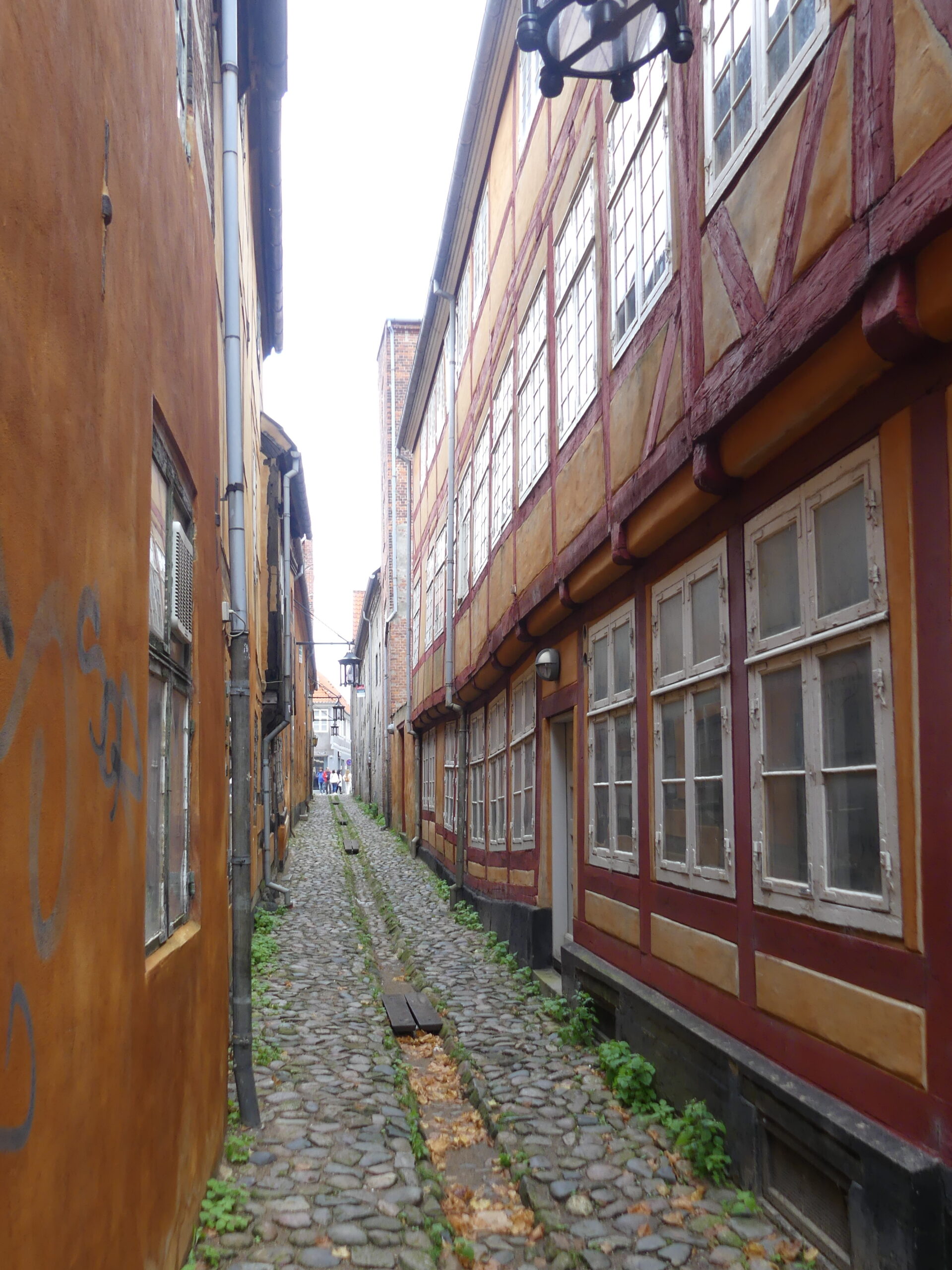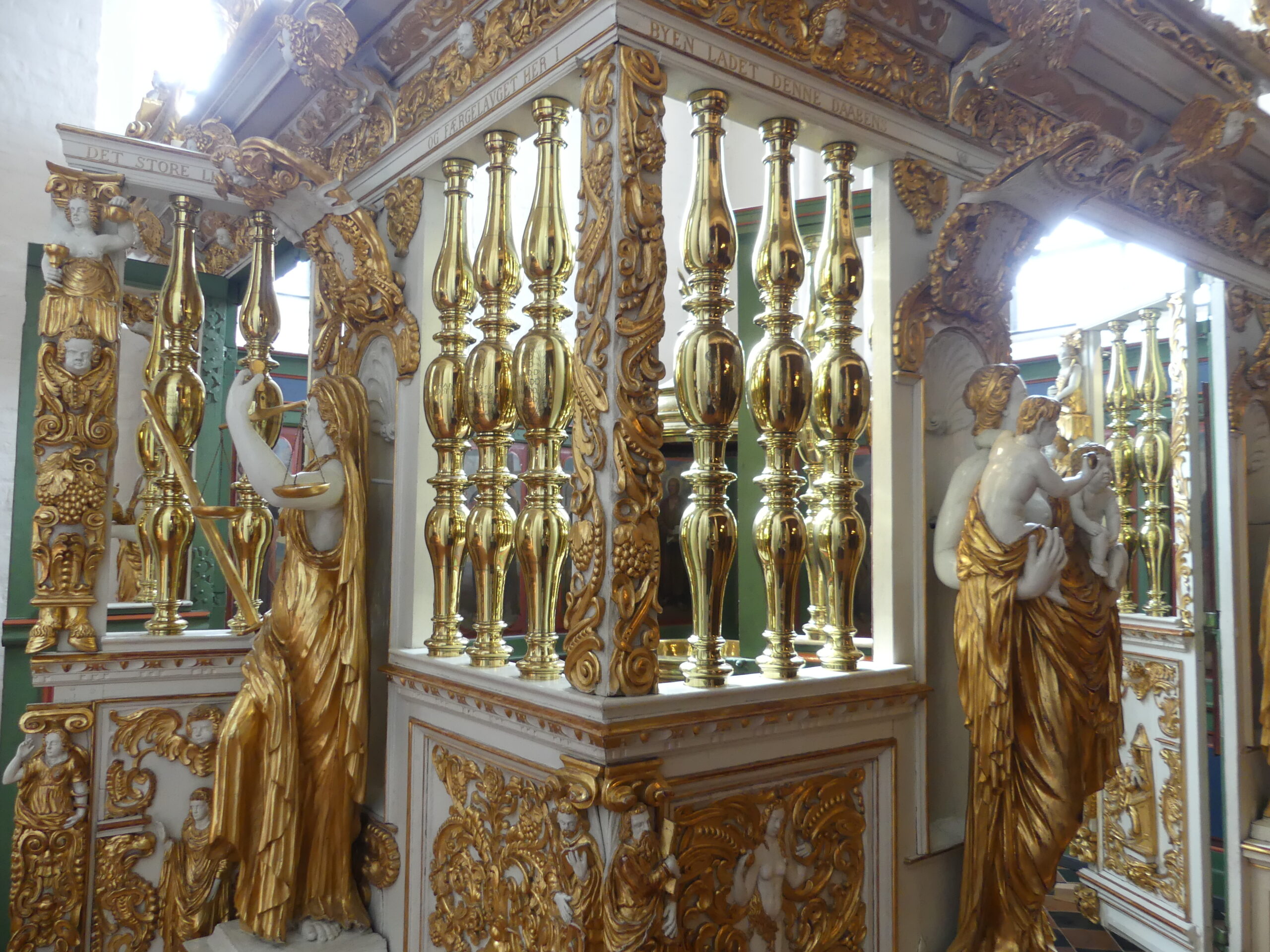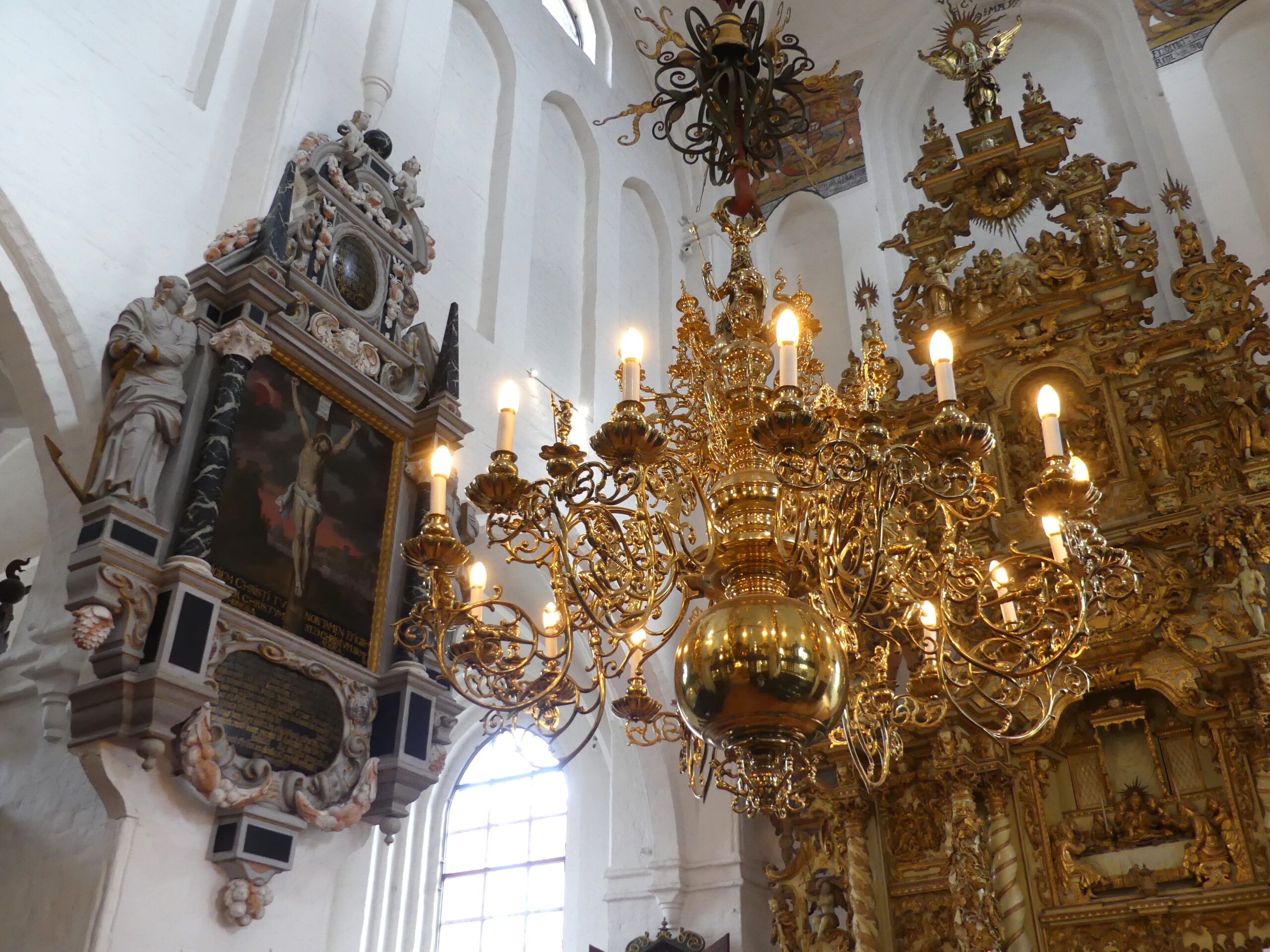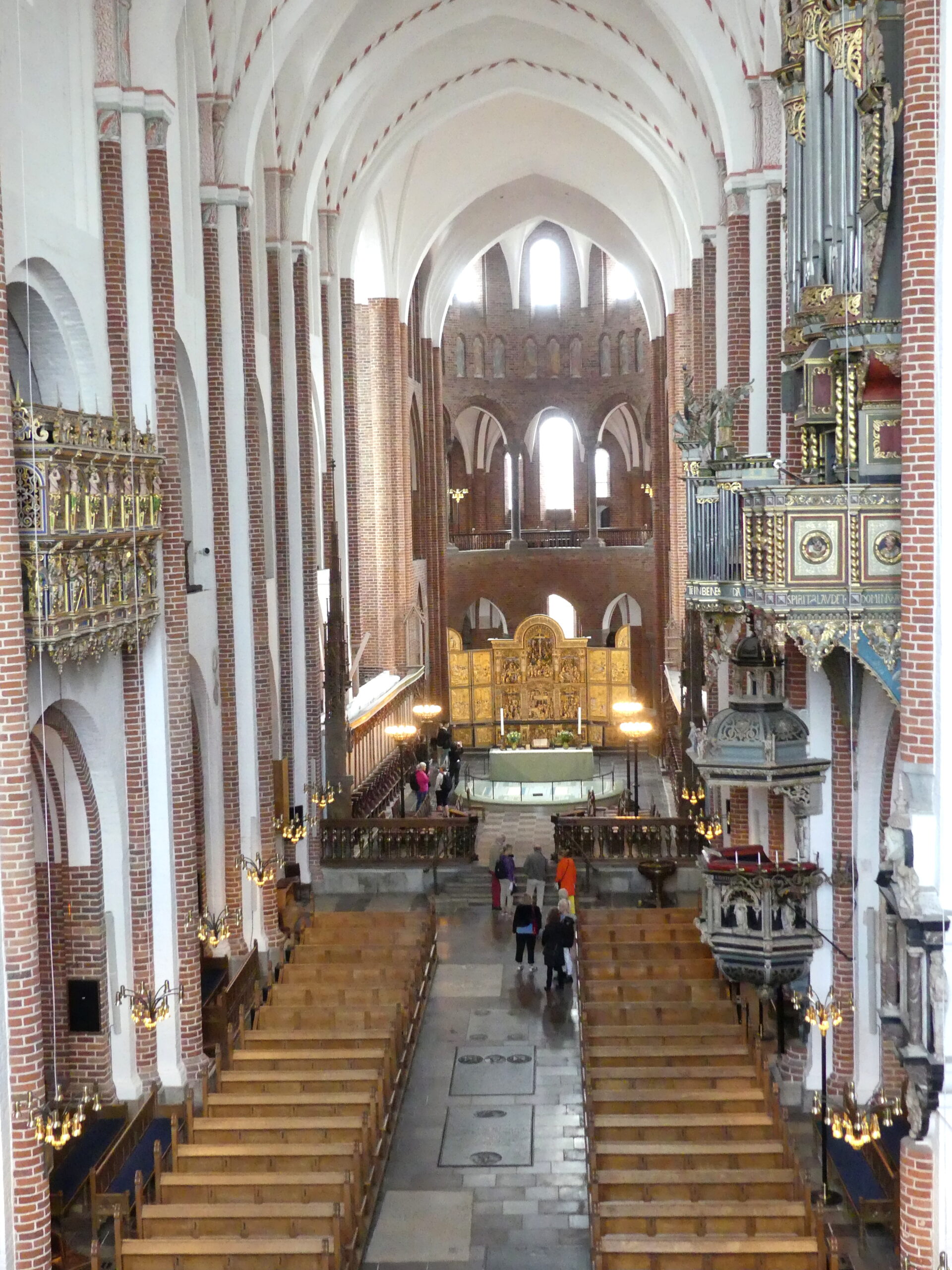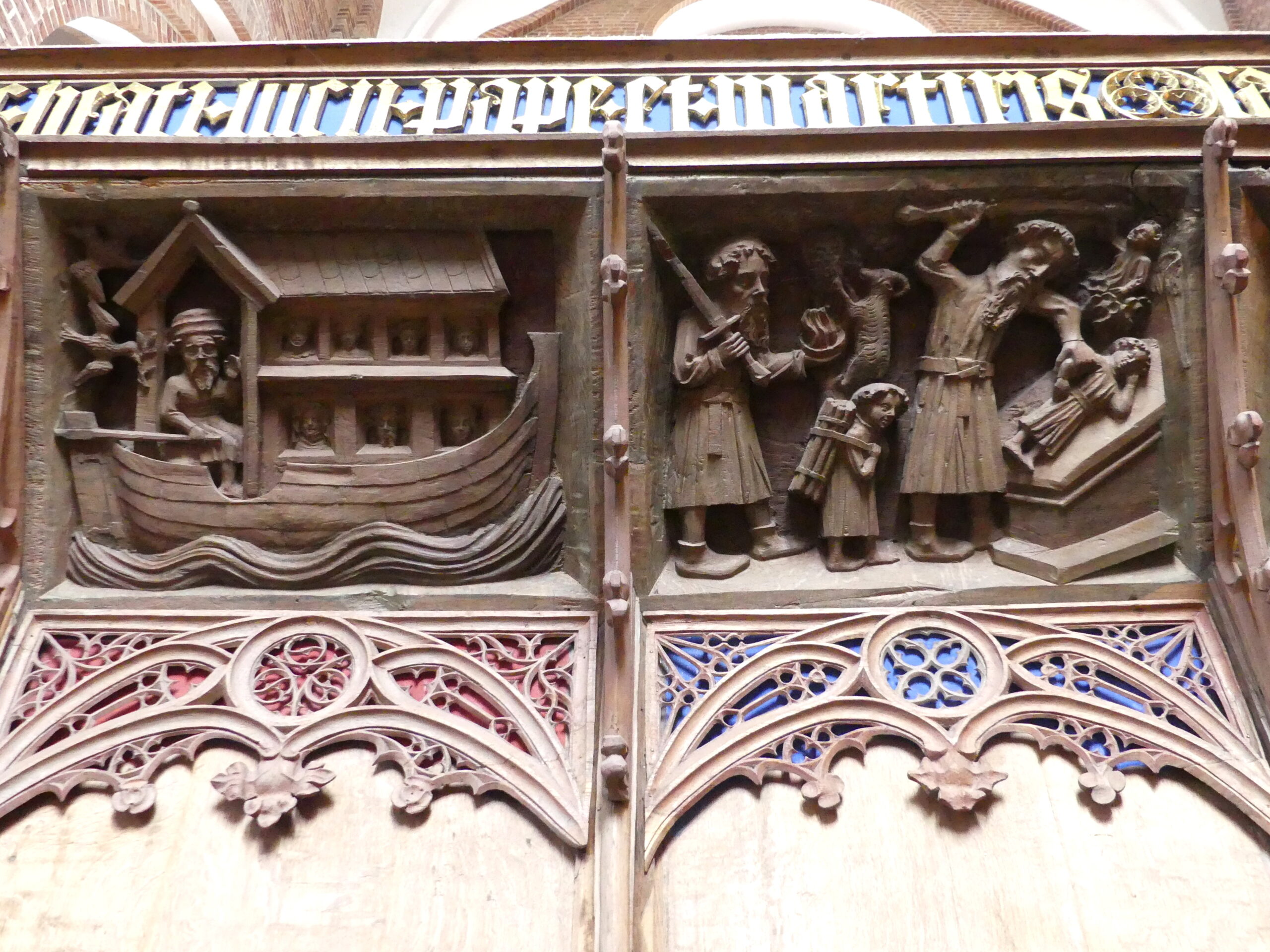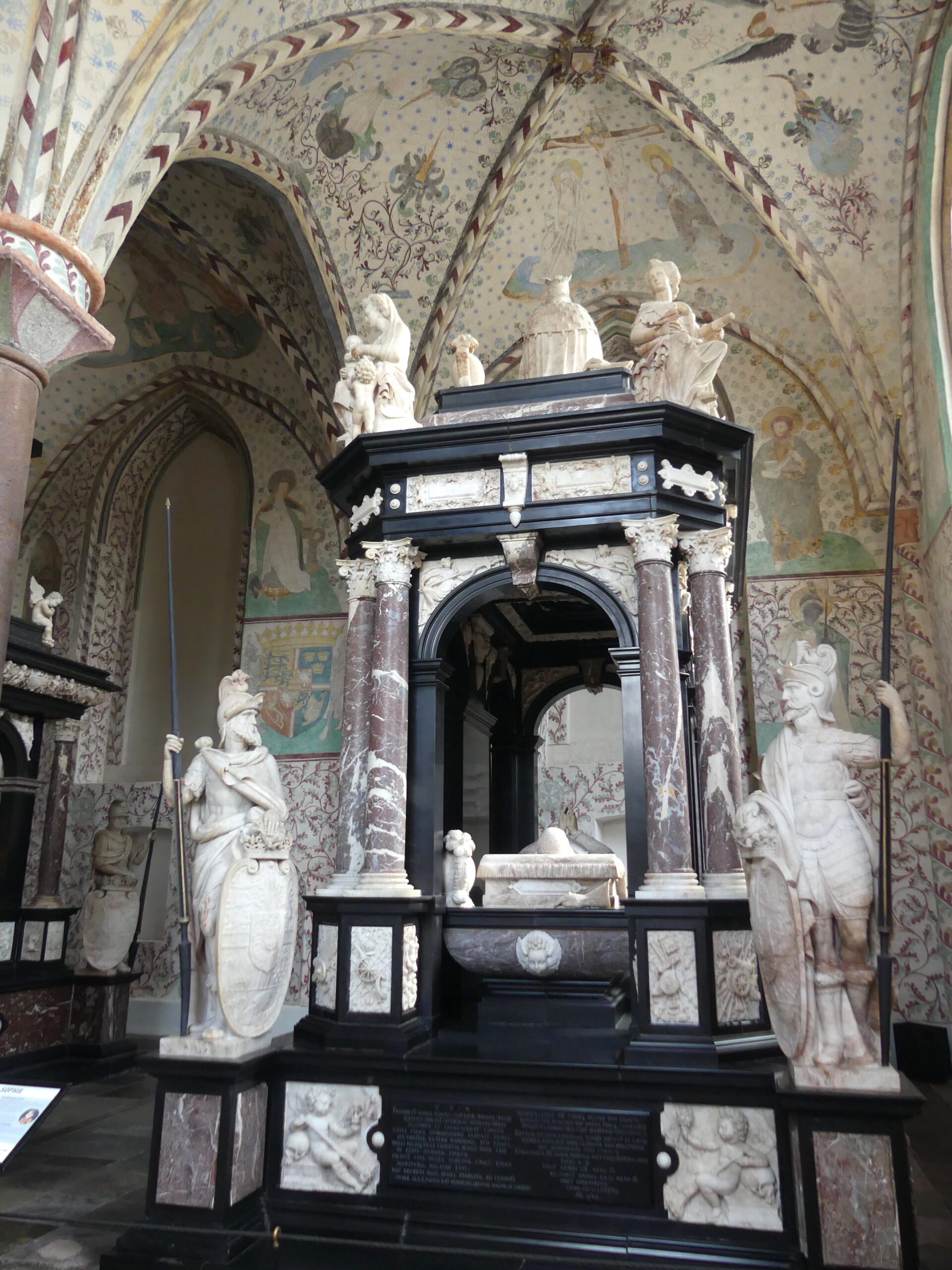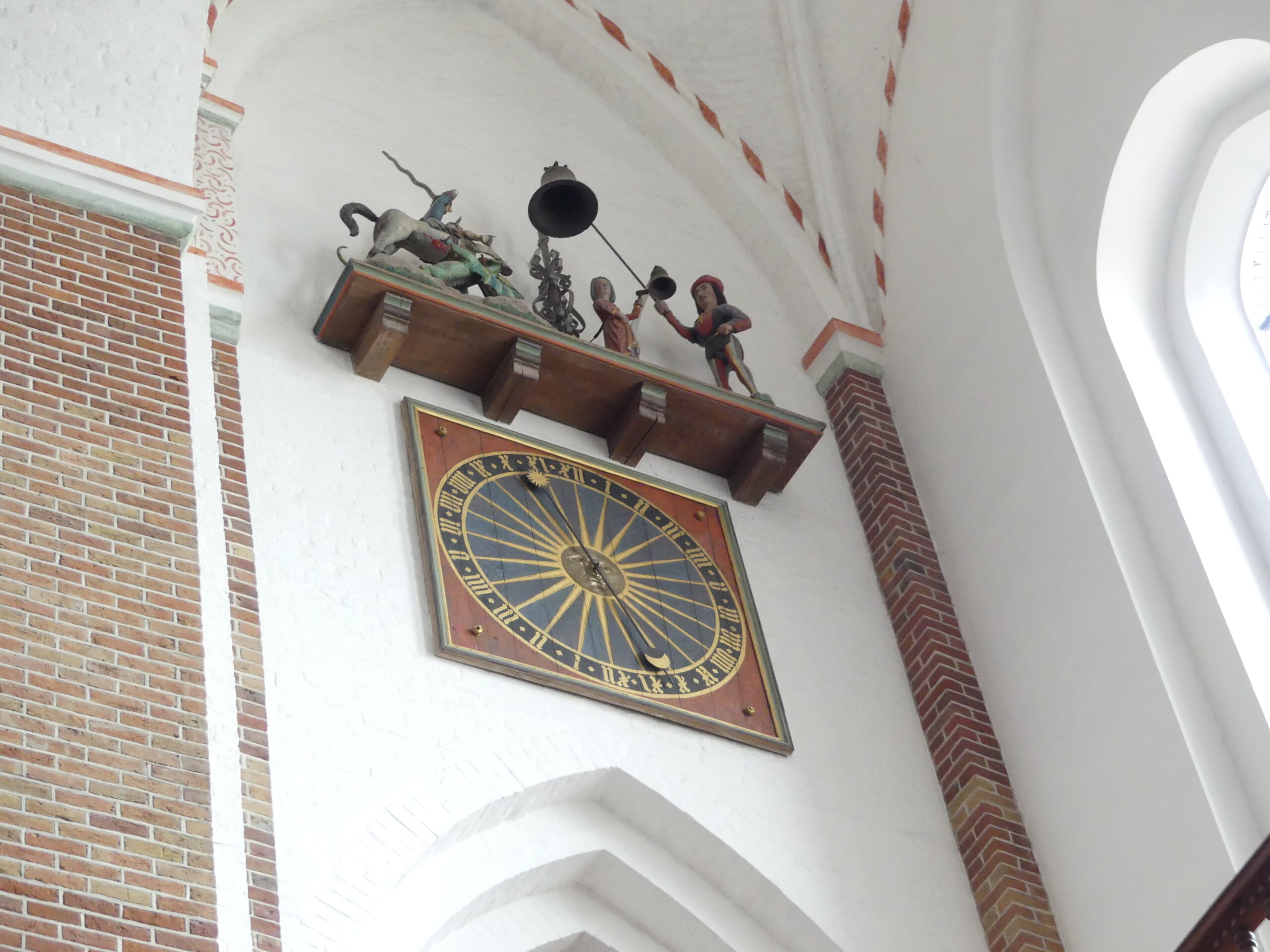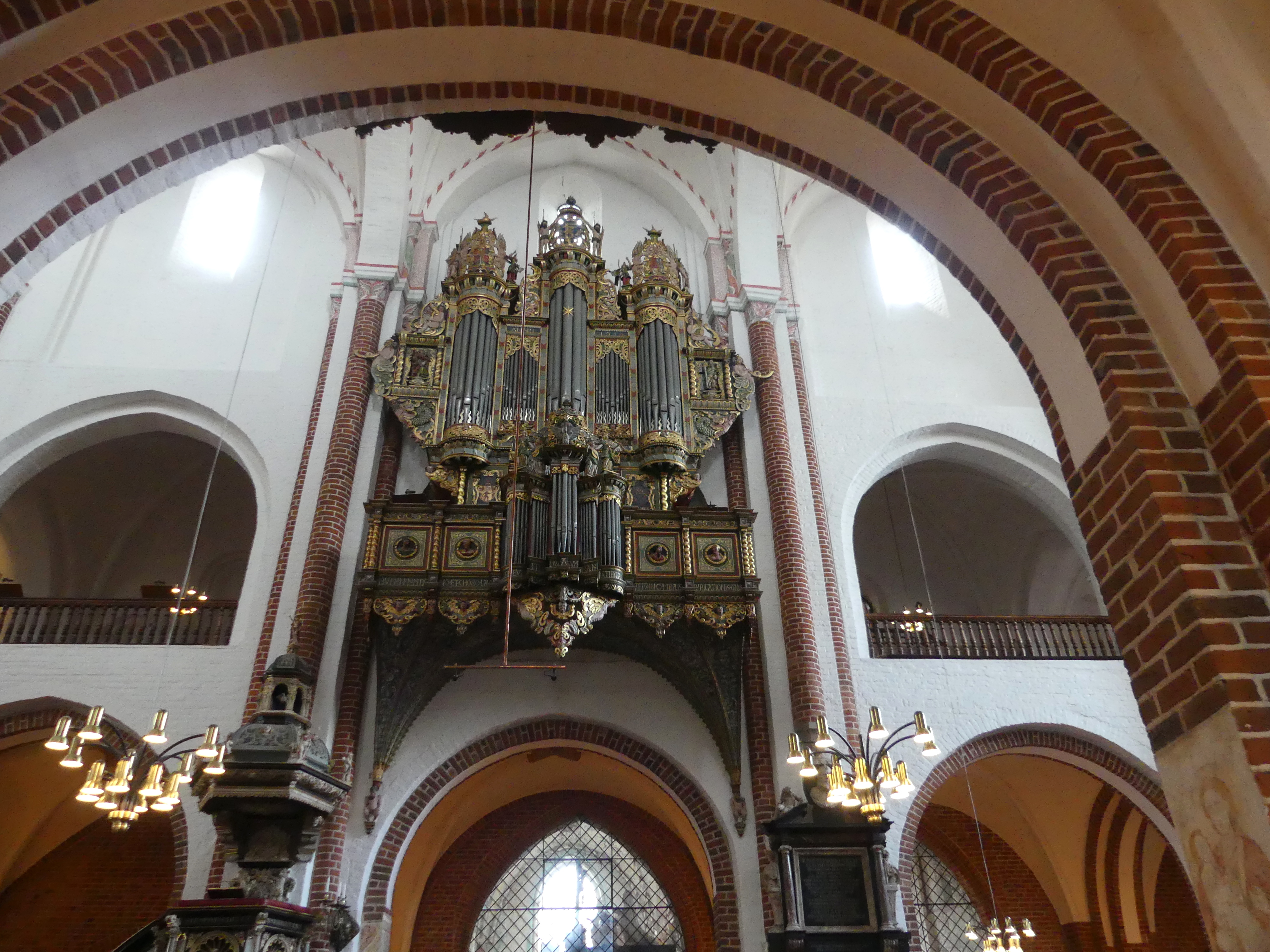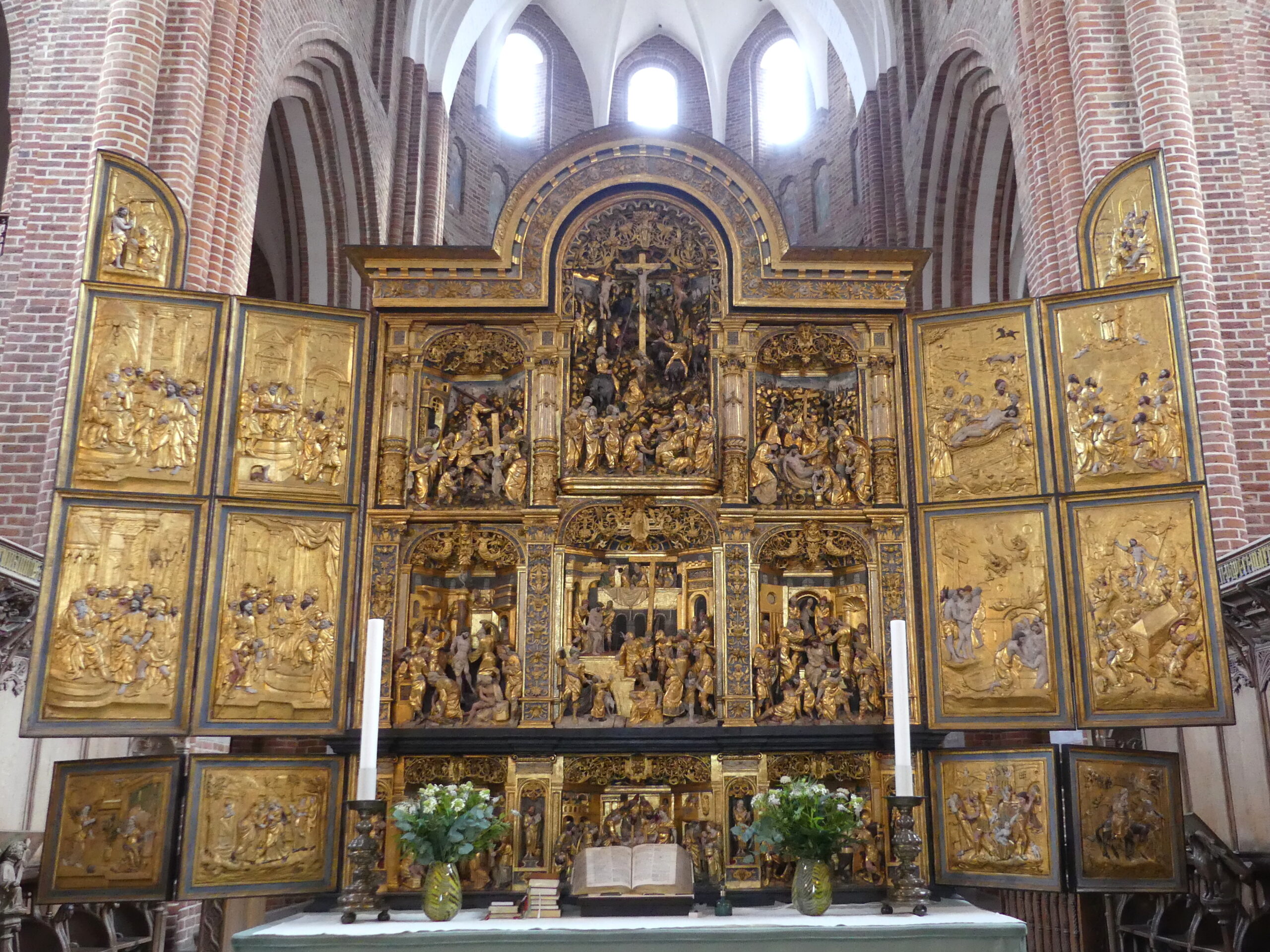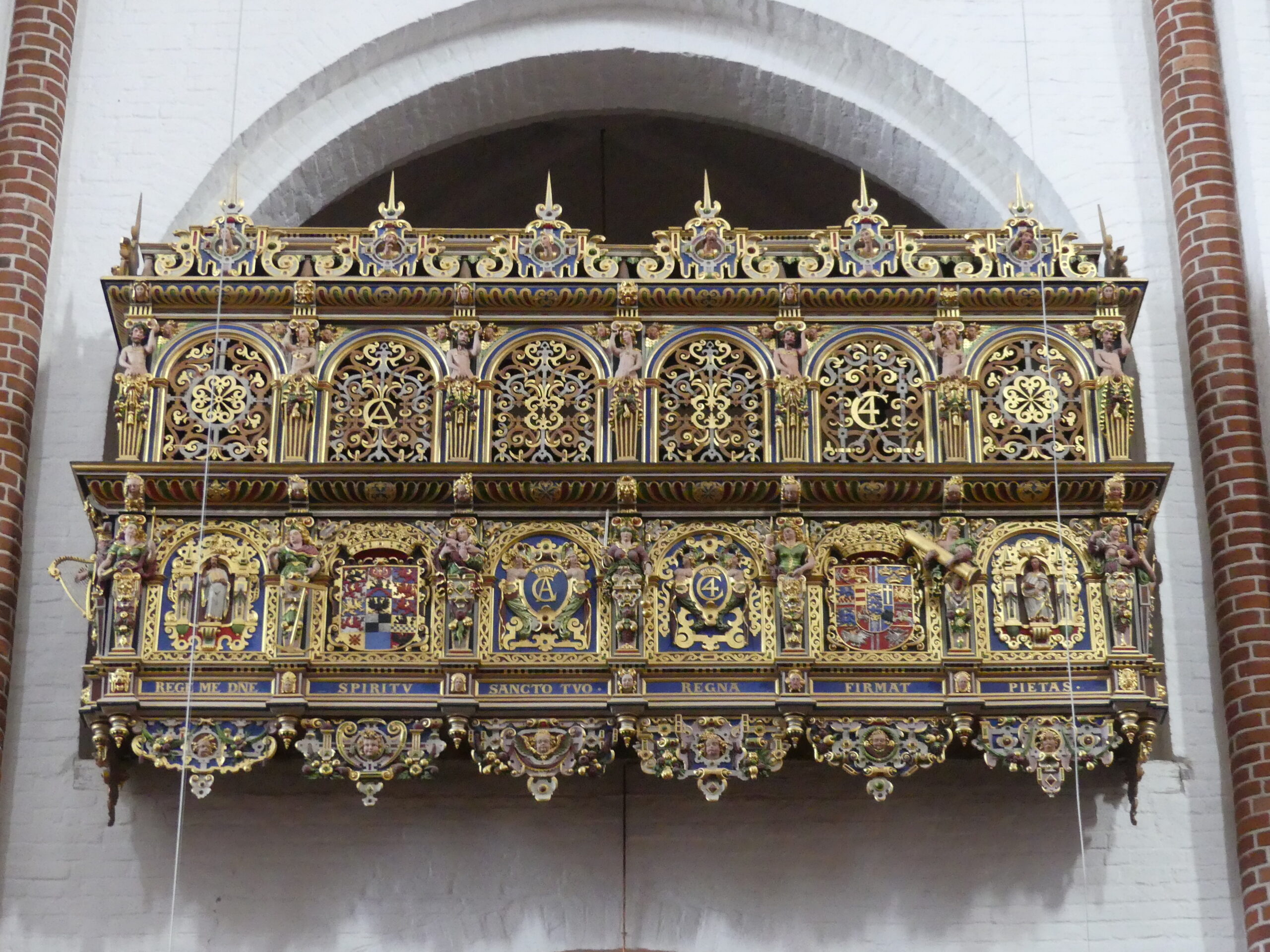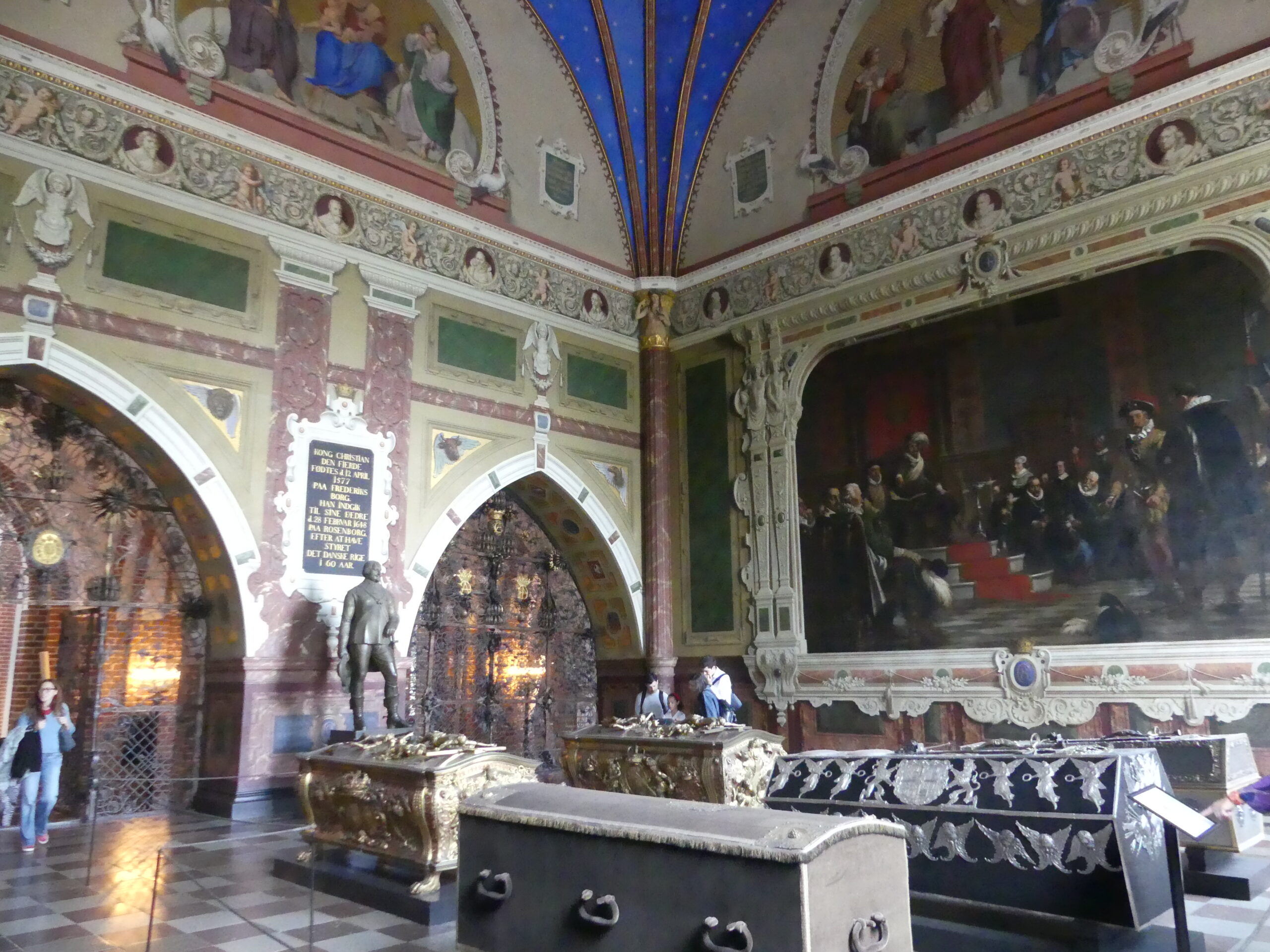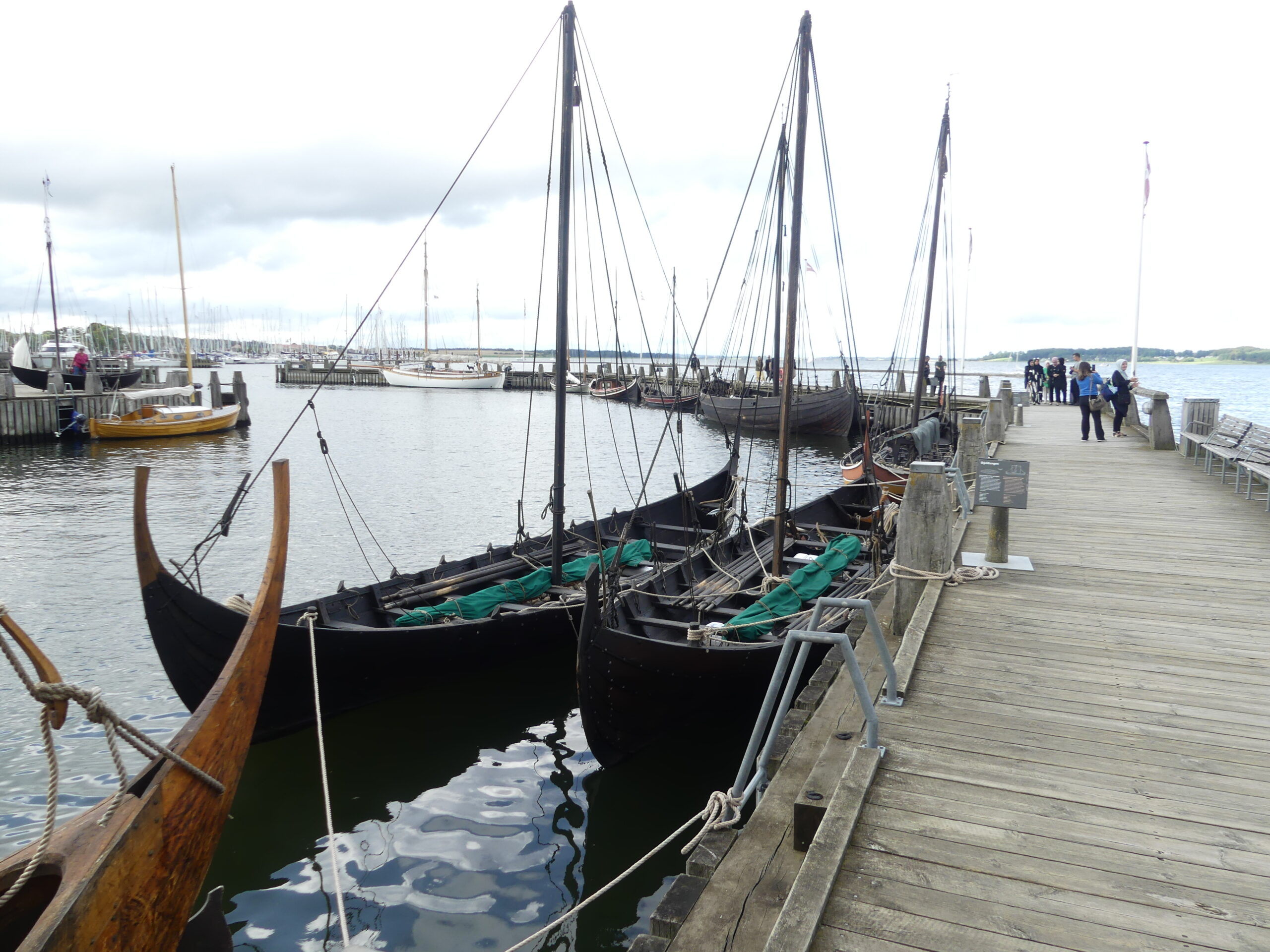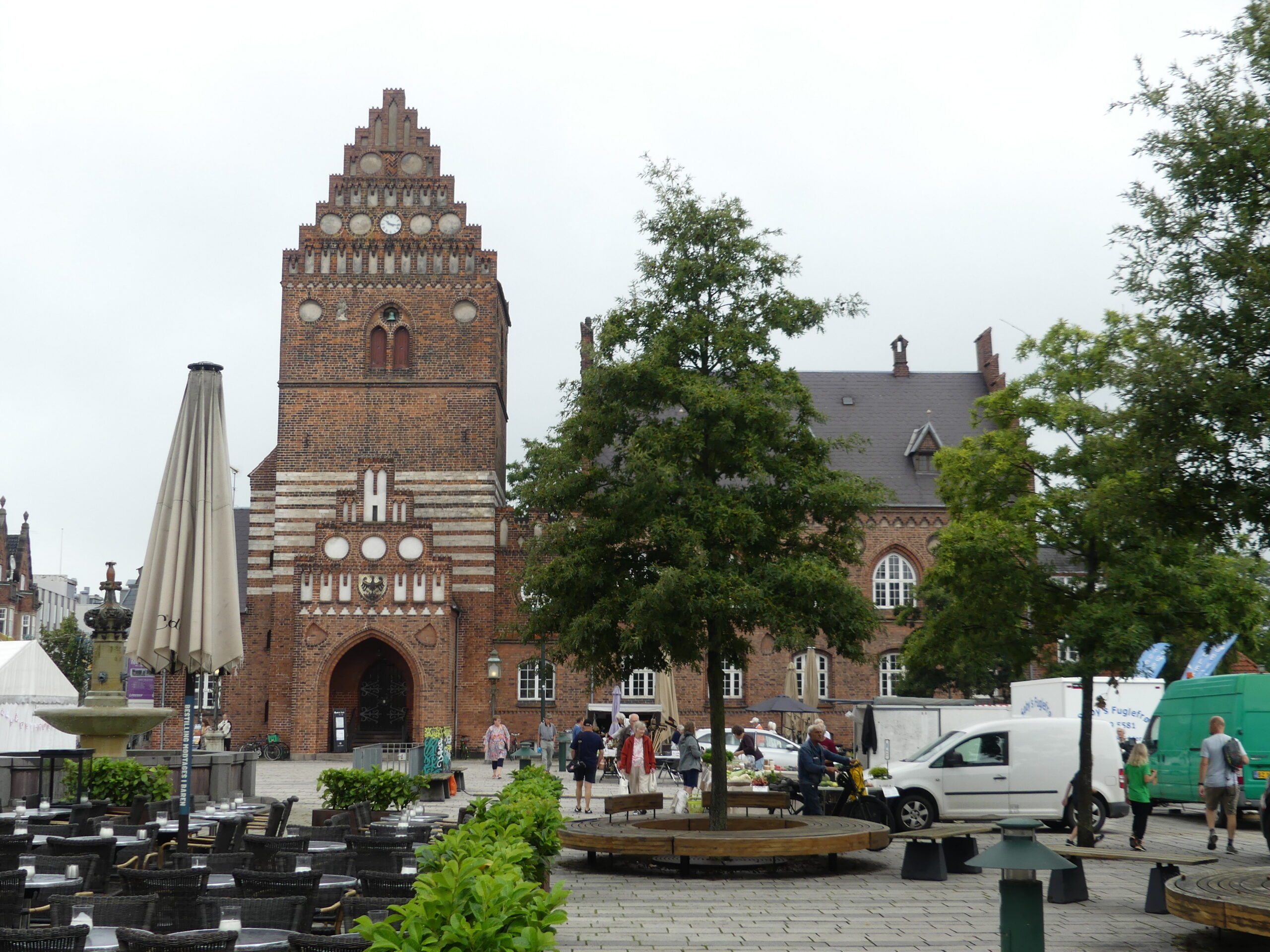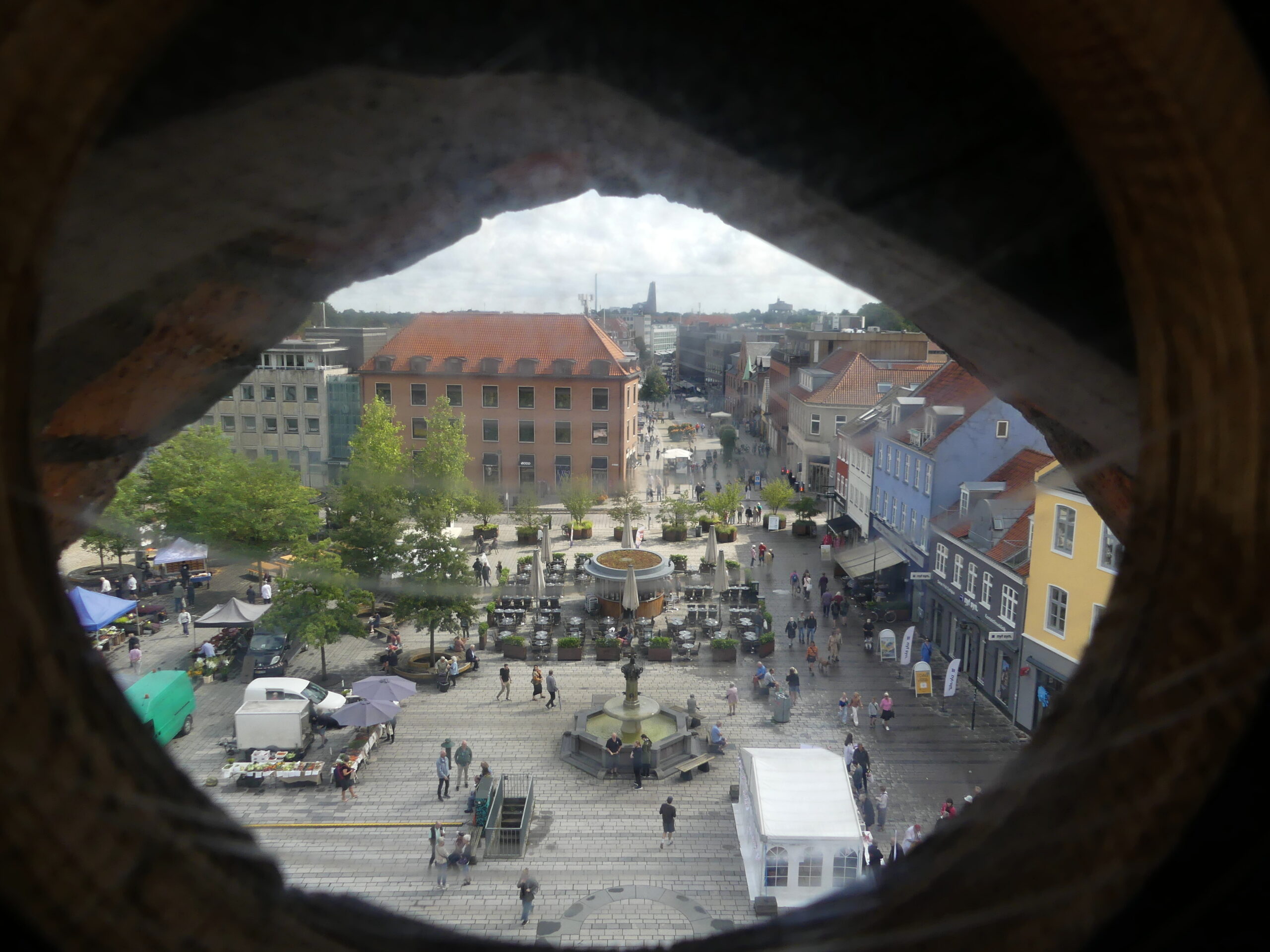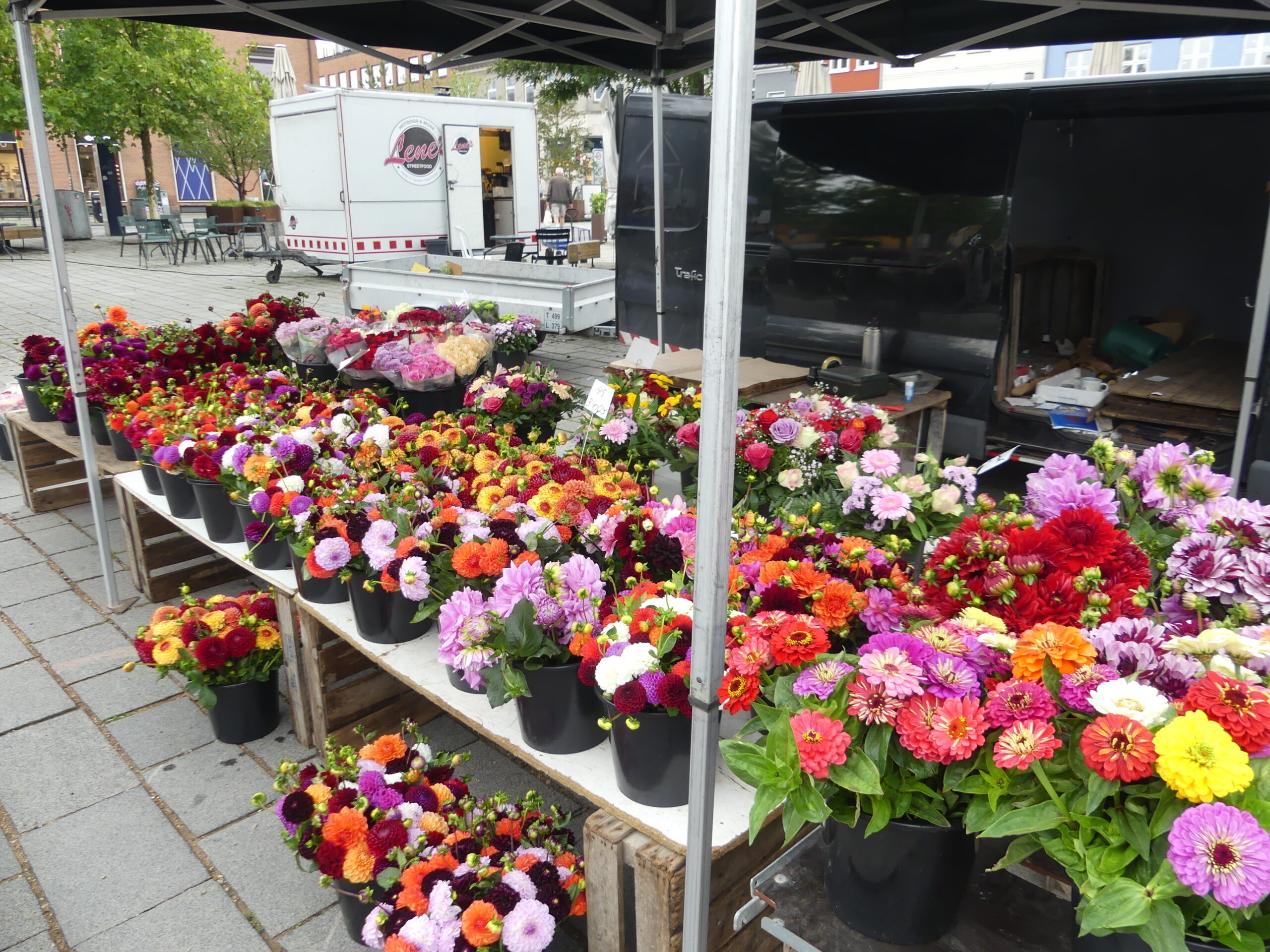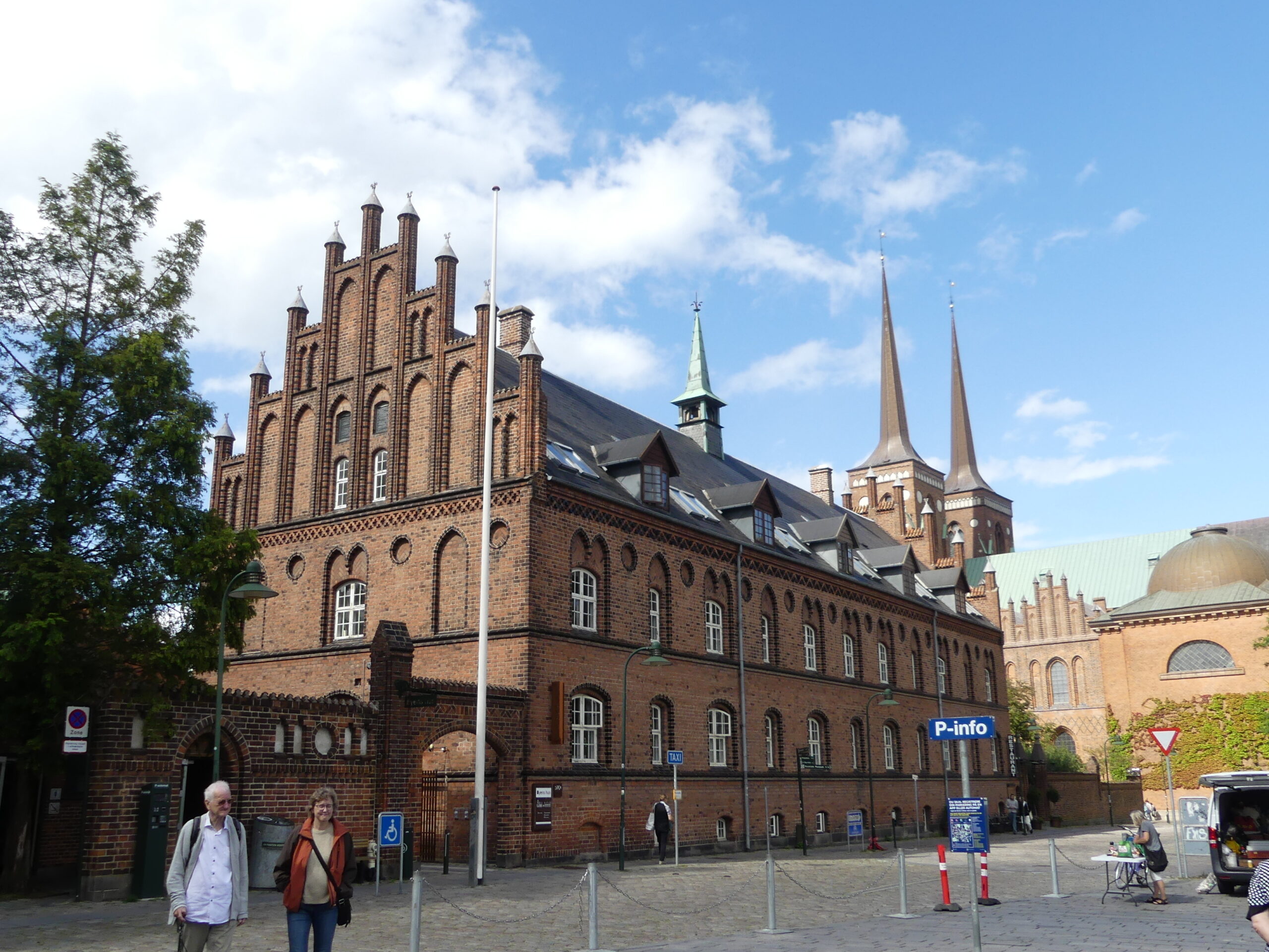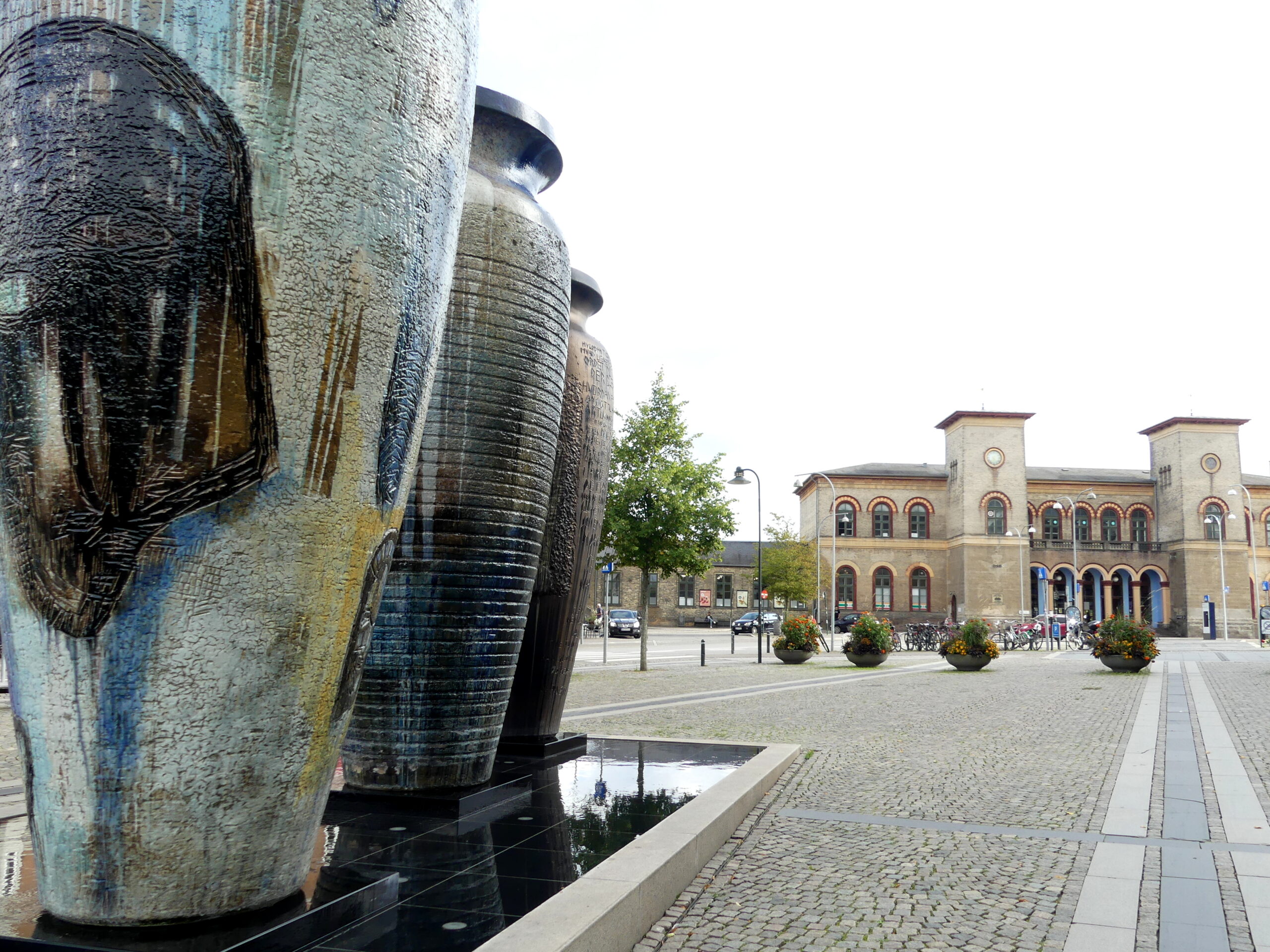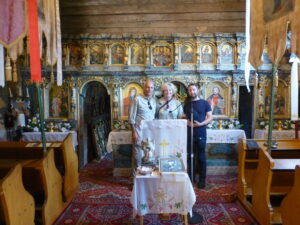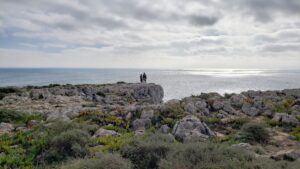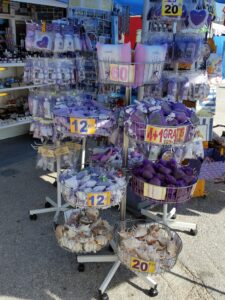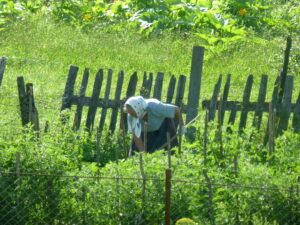Forget the modern city of Copenhagen for a moment. Let its sleek trains transport you some 800 years back in time and into the countryside. Yes, the coffee shops, markets, and housing of Helsingør and Roskilde have been updated since then, but those are mere creature comforts to accompany your amazing journey off to the past.
Helsingør
Less than an hour’s train ride from central Copenhagen sits the historic town of Helsingør. It’s also a very short ferry ride from Sweden and strategically key when the Danes and Swedes were much more hostile toward each other. Most go there to tour the 16th century Kronborg castle/fortress, a UNESCO World Heritage site, built by Frederick 2d and his beloved Sophie. But the whole town retains much of its old charm, including a resplendent church and convent.
The castle is best known now for its featured role as Elsinore in Shakespeare’s Hamlet (written about 1600 when the fame of its founders had spread to England). The site plays up the connection with both the real and the imagined Danish past, as does the town.
The attractive late 19th century railroad station of Helsingør (Elsinore) greeted us immediately with Hamlet connections in statues. Hamlet leers stonily at an Ophelia gone mad, his hand clutching his large sword.
Later, in the castle, role-playing actors greet you in various rooms. We had long talks, confusingly, with either Hamlet or Frederick and Gertrude or Sophie during our visit.
The entrance bridge to Kronberg crosses a deep moat. As Kronberg was a fortress, encircling ramparts and elaborate stone bulwarks were added over time for more protection. On them, as Elsinore, Hamlet’s ghostly father would have appeared – and apparently still does in some spectacles here. Unsurprisingly, lots of skulls adorn the inside of the palace today, keeping in mind Hamlet’s famous address to Yorick’s skull about mortality.
Frederik 2d was set to marry Margaret of Pomerania, but when she arrived at the castle for the wedding, he decided instead to marry the young daughter of her escort.
His new wife mastered her role as manager of the castle, patron of the arts, and mother to seven children. These children married into royalty all over Europe, including the future queen of England, who was married to James I.
Though altered by fire and later additions, this is the courtyard that Frederik intended for Kronborg Castle.
The old meeting hall of Kronberg Castle, somewhat updated from the original 16th century. The goateed young man to the left of the desk deftly answered questions about the castle as if he were Frederick 2d and about the play as if he were Hamlet. As Frederick, he was fixated on conquering Sweden and England for more territory.
When we said were from the Americas, he delighted in the thought that he could rule our lands once he defeated the English. We stayed in character and did not disappoint him with the actual history.
At the top of the building, this was the royal reception hall and it connected the older Renaissance castle with the 17th and 18th century additions.
In an effort to outshine his Swedish counterpart, Frederick 2d ordered 43 tapestries to adorn his castle, each celebrating the feats of his predecessor rulers in Denmark. Seven still hang at Kronborg. This one depicts Erik VII and his son Erik VIII.
The father was notoriously murdered at the “barn in Finnerup.” The text on the tapestry, however, fails to acknowledge that the attack was perhaps justified for his theft of church funds and relentless preying on courtly women. The son not only avenged his father’s death, but – as the siege in the background shows – conquered much northern German territory.
Oddly though Krongberg was such a grand castle in which to entertain at day-long feasts and conduct court business, the royal couple were frequently away visiting the kingdom. And when they did, they left the place somewhat empty as they packed up most of their belongings and trappings, accompanied by hundreds in their retinue, to move comfortably into another castle along the way.
Below the castle we found an extensive set of dank tunnels and dark rooms from the 16th century called the casements. Here, as a last resort, 350 soldiers, their supplies, and their horses could survive for six weeks under siege. Legends (and a Hans Christian Andersen story) say that the giant Holger the Dane, a ferocious Viking, sleeps here, only to wake when the Danes are endangered (like similar giants such as the Golem).
A tour of the city around Kronborg offers much that is equally distant in time.
The 15th century St. Mary Church and Carmelite priory is one of the finest remaining monastic structures in northern Europe. It is somewhat more austere than the Cathedral, but this aisle featured a superb painted ceiling, frescoes of scenes from the life of Jesus. For eight years in the late 17th century, the famous composer and organist, Dieterich Buxtehude, worked at this church (though his father served at the Cathedral instead).
In the nearby street, we found a stunning row of 16th century stone houses, built at the same time as Kronberg Castle, housed merchants and customs officers who apparently were quite wealthy.
The tax rules set by the earlier Erik of Pomerania gave tax abatements for stone buildings vs. wood to create a more durable city. Some of those stone heads in the triangles above the windows wear costumes of the time.
A narrow lane charmingly divides these half-timbered houses near the merchant district of the central town.
The cathedral in Helsingør, the Church of St. Olai, or Olaf is nearly as old. Housing a baptismal font, this elaborate brass “manger” from the 16th century still gleams here. An artificial tree nearby held the names of those born and baptized this year. You could appreciate why so many parents would want to come here for the ceremony.
In the glittering interior of St. Olai’s, brass fixtures date back to the 17th century, as does the sumptuous, gilded altarpiece carved from oak. We were fortunate to hear a practice session by the organist, filling the church with the instrument’s reedy sound.
Roskilde
The World Heritage site of Roskilde Cathedral, a Gothic treasure in brick, records 800 years of architecture and history within a still active church. Inside, you can saunter through that period of time. Nearly all the Danish kings and queens since 1400 are buried here in tombs large and small, grand and ostentatious – set in chapels that demonstrate aesthetic ideals over the centuries.
Why Roskilde? King Harald Bluetooth! He made it the capital of Denmark in 960 because it was well sited on the natural bay of the Roskilde fjord, some 30 kilometers west of Copenhagen. Bluetooth wasn’t available to guide us; instead, happily, a Roskilde woman whom we befriended during our pandemic stay in Jordan toured us personally.
The nave of Roskilde chapel. Despite the Reformation, the altar remains in the center, where the wealthy and royals gathered in Catholic churches. The cathedral survived the rupture when Protestantism drove the Catholics from the church and long periods of penury – but, as our visit showed, survived these magnificently.
The impressive alabaster and black limestone tomb of Margrete 1, a Catholic when she died in 1412, but kept here despite the Protestant revolution. She was the first ruler entombed at Roskilde, when that town was the country’s capital. She was placed here by her successor, Erik of Pomerania – honoring her for uniting Denmark with Norway and Sweden.
The current queen, Margrethe 2, has a tomb and chapel all prepared for herself. After Margrete 1, the Danes cleverly named their kings in strict order. For nearly 600 years before the second Margrete, they alternated the names Christian and Frederik, merely changing the number after their name. So, Frederik 2 followed Christian 3 (the first Protestant), and so on until Christian 10 and Frederik 9 in the 20th century. Oddly, of their 17 queens, five were named Sophie and four Louise. Somewhere in the church, you can find each of the enumerated and their significant royal others, along with over 1000 more dead people.
Two scenes from the delightful carvings of 1420, set above the seats in the choir stalls. To the left of the altar are New Testament scenes; to the right, Old Testament. Here, is Noah’s ark at the moment the dove returns, with human faces in the windows where you might expect animals.
And then a sequence of scenes from Abraham’s near sacrifice of Isaac, first walking to the site on the left and then, on the right, a frightening depiction of the moment before Abraham’s sword descends. Preceding these were panels representing creation as a large circle and Eve levitating from Adam’s side.
The 15th century frescoed walls of the Chapel of the Three Wise Men present a gracious backdrop for Frederik 2’s tomb, a kind of Renaissance temple with Roman guards. He built Kronborg Castle in the 16th century. The almost identical tomb for his father Christian 3 sits nearby in the same room. The figure in the arch to the left of this tomb is Saint Dorothea, patron saint of Christian 1’s queen, who supervised the original painting hundred years earlier.
The unmissable clock from 1500 AD, not because its location is obvious in a back corner of the Cathedral, but because the middle figure strikes the small bell every quarter-hour. On the hour, as a sign of good conquering evil, St. George slays the dragon, whose cry prompts the right-hand figure to strike the large bell.
The world famous Raphaëlis organ at Roskilde framed by a Romanesque arch. It was built in 1554 to accompany hymn singing, but redecorated in the Baroque style a hundred years later. F3 (Frederik 3 and his Queen Sophie Amalie) are celebrated in the decorations at the top.
The 1560 AD altar, a Renaissance masterwork in painted oak. On this side is scenes from the life of Jesus; on the reverse, in worthy Protestant fashion, are panels showing Jesus’ good works.
It’s easy to figure out who donated this magnificent 17th century seating space for the royals at church. On both rows to the right of center, you can spy rondels carved with the C4 for Christian 4, one of the longest ruling and most generous of the monarchs.
The sumptuous 19th century trappings of the Chapel of the Magi. Here are buried the most famous king of Denmark, Christian 4, his wife Sophie Amalie, and son Frederik 3. Their original 17th century chapel burned down, leaving only the decorative entrance from the outside of the church.
As in Helsingør, much of the town of Roskilde spans the ages.
The Norse Viking Museum at Roskile brings one even further back in time to the medieval period, when the Vikings overran large sections of Europe and founded villages in Greenland.
In addition to the museum, sheds around the grounds let the moderns practice the crafts and skills of those Norsemen and Norsewomen. Here are two of their boats restored, still surprisingly small for seafaring.
The ancient bell-tower from around 1500 AD graces the late 19th century neo-Gothic city hall of Roskilde. The tower was part of the St. Lawrence church, which was displaced by the new structure. We visited the foundations of the old church beneath the tower and climbed up the winding stair for the view, discovering that the tower was also used as a jail for a while.
View from the 1500 AD bell tower over the main Roskilde plaza. Twice a week the plaza fills with local farmer produce, magnificent bouquets of flowers, and craft offerings – a popular outing for locals.
The Danes truly appreciate their flowers and flower shops, presumably to add a lot of color to frequently cloudy or wintry days.
Another late 19th century civic building in traditional Danish style at Roskilde’s market plaza, with the piercing towers and domed apse of the Cathedral in the background.
In the end, we needed to return from the past toward Copenhagen. A suitable time machine was the Roskilde Station, built in 1847 as the first station building in Denmark. Imitating the Villa Borghese in Rome, it aimed to look even older.
(To enlarge any picture above, click on it. Also, for more pictures from Denmark, CLICK HERE to view the slideshow at the end of the itinerary page.)


